The experts in boutique travel To Peru and South America
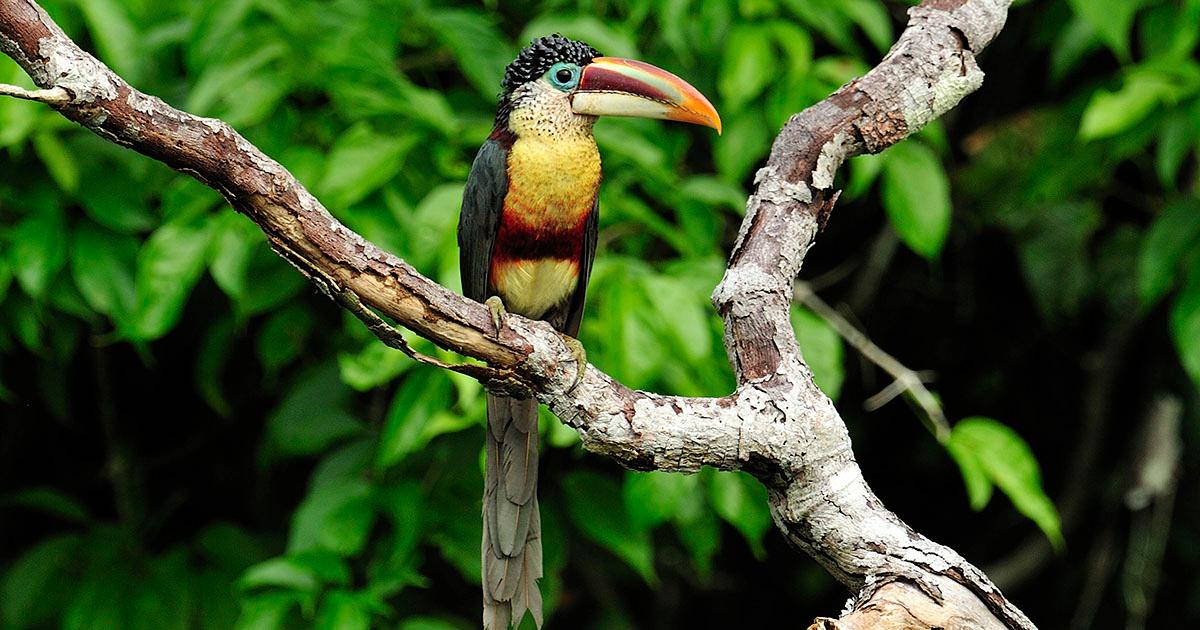
Peru is considered a megadiverse country, as along with sixteen other countries, it contains more than 70% of the planet’s biodiversity. An impressive 1,869 bird species are found in Peru—the second-highest of any country in the world. Consequently, birding in Peru plays a vital role in its tourism sector. Three distinct birding routes (Southern, Central, and Northern) have been developed for Peru’s tourism.
Geographically, Peru, and each birding route, is divided into three major zones: costa (coast), sierra (highlands), and selva (jungle). Within these geographic zones, several cities and regions serve as the base from which intrepid travelers explore the surrounding natural areas. Diverse ecosystems, endemic species, and unique lodges comprise each route and zone. Continue reading for expert tips on birding in Peru and how to add hundreds of new species to your life list!
*Cover photo by Thomas Marent for Rainforest Expeditions.
Undoubtedly the most traversed tourism route in Peru, the southern birding route allows travelers to balance their itinerary with birding, archaeology, and cultural experiences. It begins south of Lima in the desert peninsula of Paracas and travels through the high Andes until culminating in Peru’s southern Amazon Rainforest. This route incorporates Peru’s top tourist destinations, like Colca Canyon, Lake Titicaca, and Machu Picchu, with birding for the best of both worlds.
*Individual birding site elevation and ecosystem classifications have been obtained from Peru’s Export and Tourism Promotion agency – PROMPERÚ’s official guide, unless indicated otherwise.
Located 3–3.5 hours south of Lima, Paracas is a quiet beach town located on a desert peninsula. While its beaches are not white sand with turquoise waters, the landscapes are breathtaking and the environment is captivating. The main attractions are the Paracas National Reserve, Ballestas Islands, and the mysterious Nazca Lines. There are several top-quality hotels here with ocean views, perfect if you’d like to add a rest day or two to your itinerary.
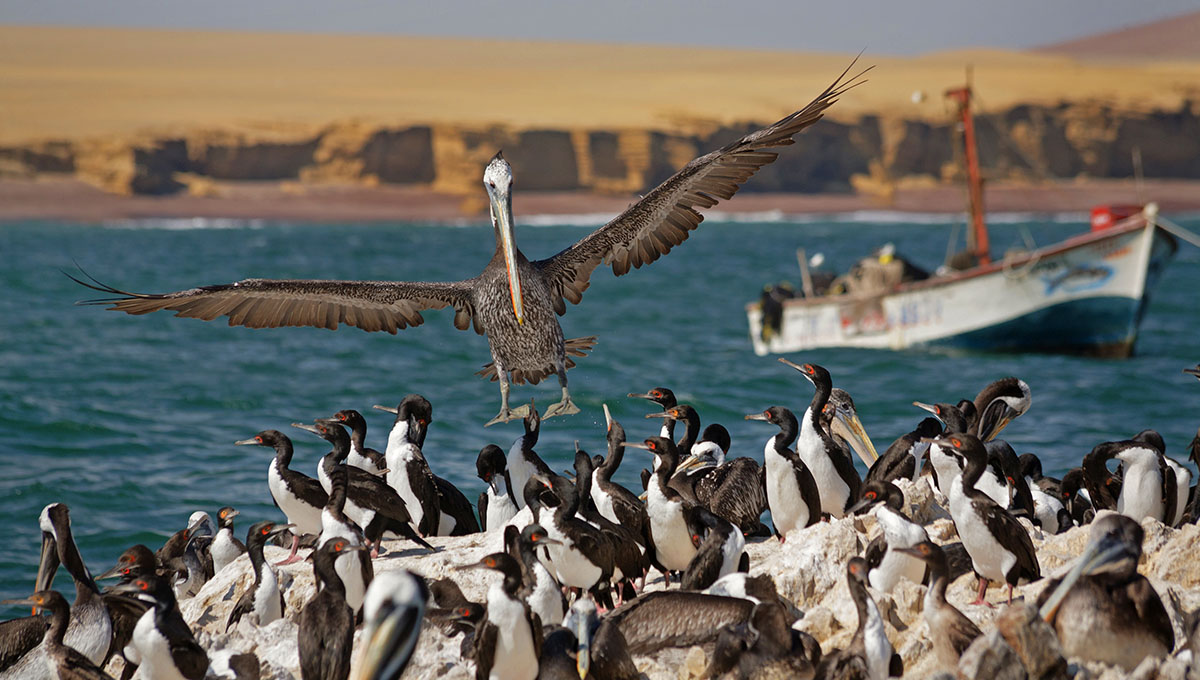
From Lima, travel south 3–3.5 hours. Several bus companies service this route, as do private car companies.
The cold and nutrient-rich coastal waters caused by South America’s Humboldt Current sustain a high diversity of marine life, including seabirds. The Paracas National Reserve protects 827,803 acres (335,000 ha) of marine (65%) and land (shore and island) (35%) ecosystems. 216 species of birds are found in the reserve, including the endangered Peruvian Diving-petrel (Pelecanoides garnotii) and the endangered Peruvian Tern (Sternula lorata). Visitors enjoy bird watching from around the Paracas Bay, La Mina beach, Paracas museum, and coastal Laguna Grande. The coastal and ocean views are quite stunning and draw many travelers for this reason alone.
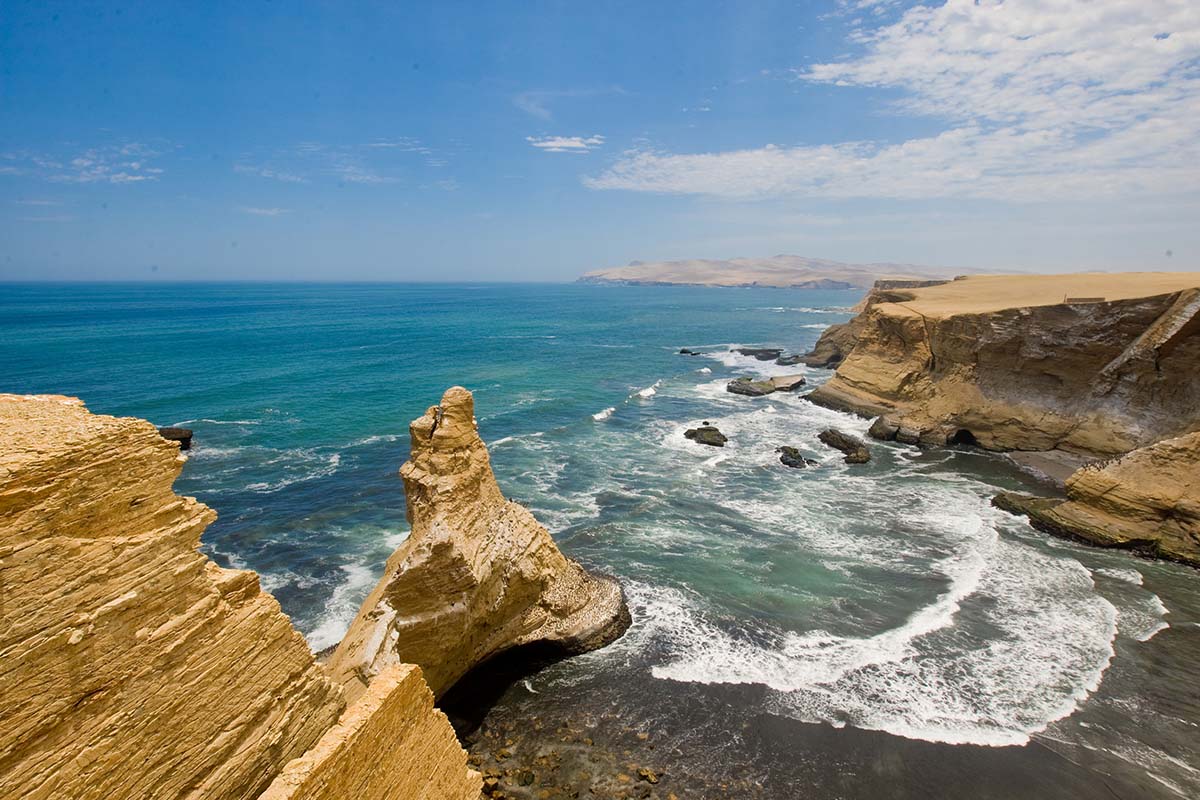
The Ballestas Islands encompass part of the Reserva Nacional Sistema de Islas, Islotes y Puntas Guaneras (RNSIIPG). Sometimes referred to as “The Poor Man’s Galapagos,” the Ballestas Islands are inhabited by many of the species found in Ecuador’s Galapagos Islands, while being, in general, a more affordable trip. On boat tours from Paracas, travelers have the opportunity to observe large flocks of seabirds and colonies of Humboldt Penguins (Spheniscus humboldti). As the tour boat winds around the islands, you will observe various species on the rocky islands and soaring in the sky. Large groups of South American sea lions (Otaria flavescens) are also observed sunbathing on the islands and swimming in the turquoise waters. The tour lasts approximately two hours and is a must-do on a birdwatching trip to Paracas.

Paracas Tours:
The city of Ica is perhaps most famous for its Pisco, a South American brandy and a source of Peruvian pride. Ica is home to several wineries and vineyards. These are popular among tourists, as are dune buggy and sandboard tours in the surrounding dunes. Farther from the city is the Pampas Galeras – Barbara D’Achille National Reserve, which delights birders and wildlife enthusiasts alike. Paleornithology enthusiasts will also be interested to learn that the holotype of the prehistoric penguin Icadyptes salasi was discovered just south of the city of Ica—individuals of this species measured up to 4.9 feet (1.5 m) tall!
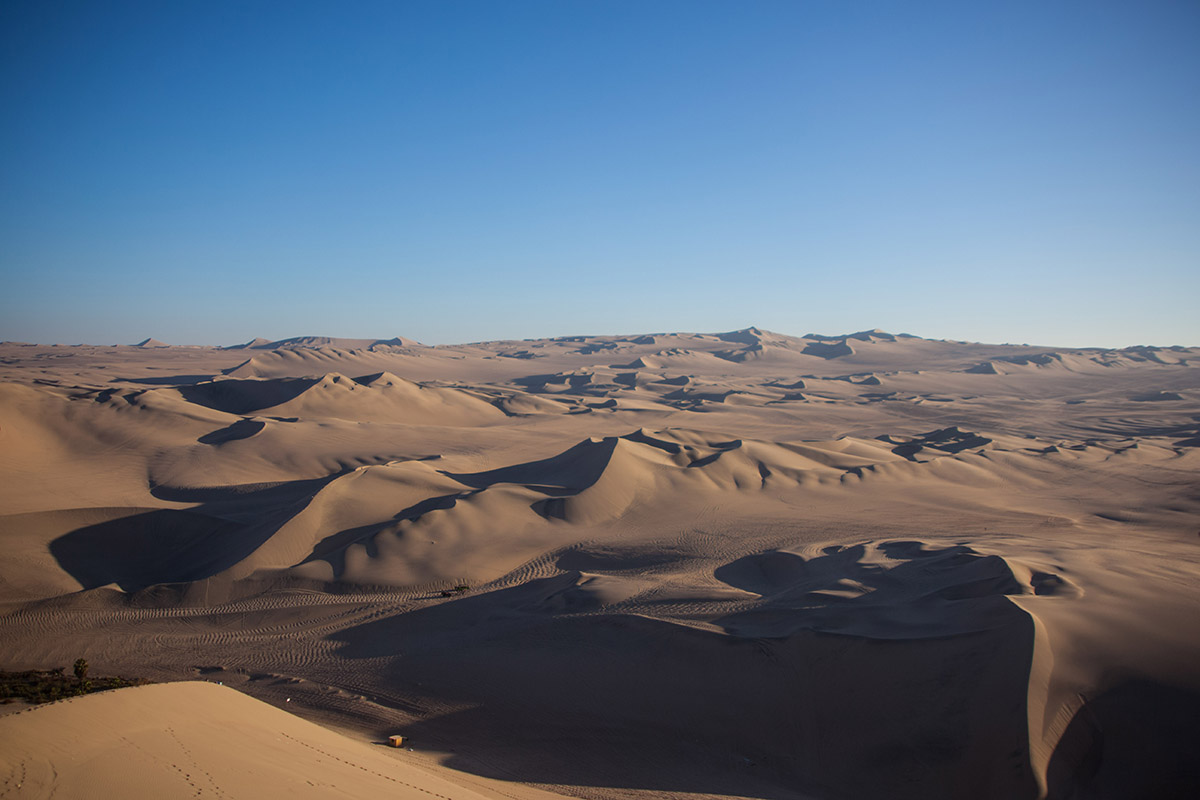
Buses travel between Paracas and Ica several times each day. The journey is 1 hour 30 minutes.
Located east of Peru’s famous and mysterious Nazca Lines, Pampa Galeras – Barbara D’Achille National Reserve is well known for its successful vicuña (Vicugna vicugna) conservation program. Once threatened with extinction due to their wool’s value, the population of vicuñas has increased from 5,000 to 200,000 individuals since the 1960s. However, vicuñas are not the only reason to visit Pampa Galeras. 20 species of birds also inhabit the reserve, making it a wonderful place for birding in Peru. On the journey from Peru’s coast to its Southern Andes, Pampa Galeras is undoubtedly worth a visit to see the iconic Andean Condor (Vultur gryphus).

Volcanic landscapes, exquisite architecture, and colossal canyons define the Arequipa Region. Its capital city of the same name is the second most populated city in Peru. White volcanic sillar was used to construct the centuries-old buildings in its city center, thus being designated as a UNESCO World Heritage Site and nicknamed the “White City.” A 3-hour drive from Arequipa city along the Salinas y Aguada Blanca National Reserve brings you to the world-famous Colca Canyon. Popular among birders and non-birders alike, including this region of Peru in your itinerary will certainly not disappoint.

There are several flights between Lima (LIM) and Arequipa’s Rodríguez Ballón International Airport (AQP) each day with LATAM Airlines in addition to a handful of direct flights connecting Arequipa (AQP) with Cusco (CUZ).
It is also possible to travel via bus from cities like Lima (18 hours), Cusco (10 hours), and Puno (6 hours 30 minutes).
Like Pampa Galeras – Barbara D’Achille National Reserve, Salinas y Aguada Blanca National Reserve was established initially to protect the fragile vicuña population. Today, the reserve also aims to preserve the taruca (North Andean deer) (Hippocamelus antisensis), the vulnerable Andean Flamingo (Phoenicoparrus andinus), Chilean Flamingo (Phoenicopterus chilensis), and James’s Flamingo (Phoenicoparrus jamesi).
The Salinas Lagoon (Spanish: Bofedales y Laguna de Salinas) is the reserve’s best location for birdwatching, with over 130 recorded aquatic and terrestrial species. Due to its importance in sustaining the local flora and fauna, The Salinas Lagoon has been designated a Ramsar Convention “wetlands of international importance.” During the rainy season (December–March), over 20,000 of the vulnerable Andean Flamingo (Phoenicoparrus andinus) visit the lake. This makes for a spectacular experience and a must-see on bird-watching trips to Arequipa and Colca Canyon.

Arequipa Tours:
Colca Canyon has the distinction of being the world’s second-deepest canyon. Twice the depth of the Grand Canyon, Colca Canyon is one of the most popular tourist destinations in Peru. Visitors travel to the canyon for its impressive views, living culture, geothermal activity, and to observe Peru’s emblematic Andean Condor (Vultur gryphus). These large birds possess a wingspan up to 10 feet 10 inches (3.3 m) and can only be dwarfed by the vastness of the Colca Canyon itself.
In Andean mythology, the condor is an important figure that symbolizes the sky and the afterlife. While you can observe the Andean Condor throughout the Peruvian Andes, Colca Canyon is the best place to witness this magnificent vulture. On the day of your Colca Canyon tour, rise early and visit several condor and canyon viewing points. “Mirador Cruz del Condor” is the most popular with tourists birding in Peru.
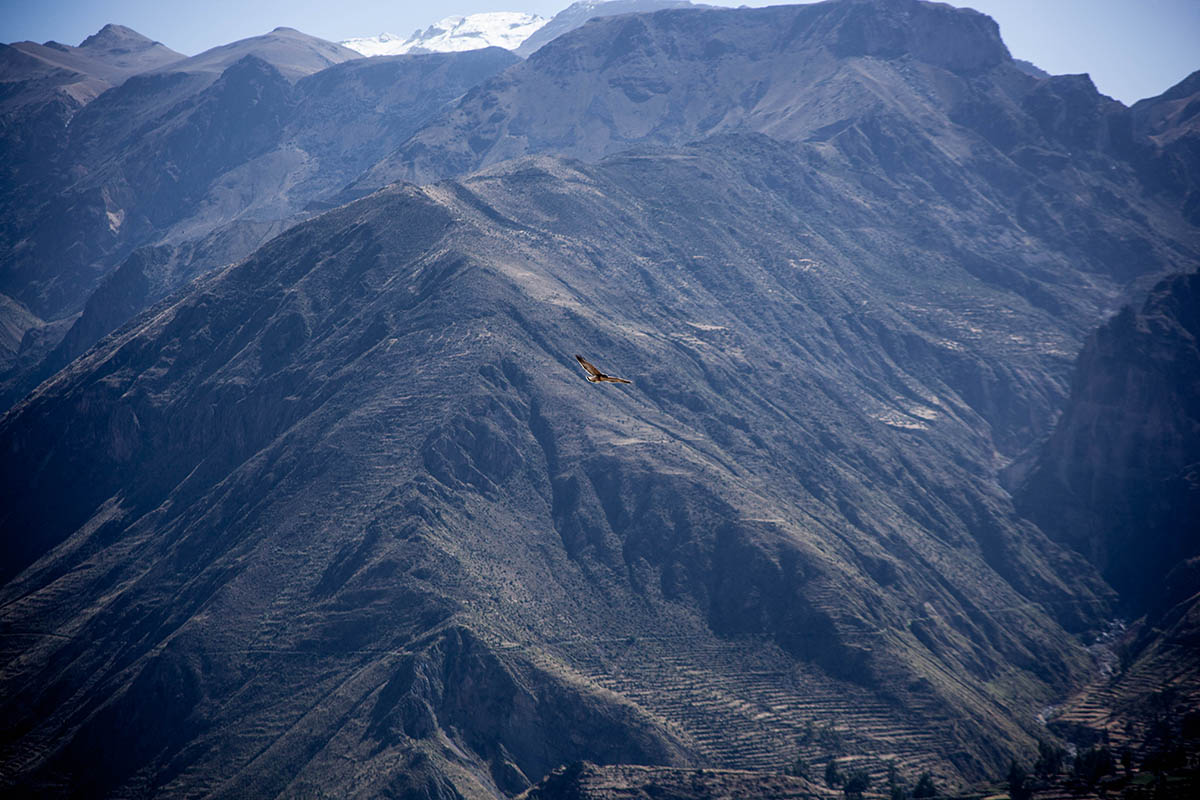
Travelers are drawn to Puno due to its privileged location on Lake Titicaca, fascinating culture, and pre-Incan archaeology sites. Its glistening waters, reed-filled shores, and smaller nearby lakes create an exceptional location for birding in Peru. Outside of the city, you will see many llamas and alpacas grazing on the expansive plains. Puno is located at 12,556 feet (1,830 m); therefore it’s imperative that travelers design their trip to build up to this high elevation gradually.

Juliaca Airport (JUL) is located 1 hour from Puno and has a handful of direct flights each day to and from Lima. However, as Lima is located at sea level and Puno at 12,556 feet (1,830 m), it is recommended not to fly directly from Lima to Puno.
Bus services are offered several times each day from Arequipa (6 hours 30 minutes) and Cusco (10 hours).
Sillustani offers travelers a glimpse into the history of the pre-Incan Qulla culture, a part of the Aymara kingdom. These archaeological ruins are located on the edges of Lake Umayo, about 5 miles (8 km) from the much larger Lake Titicaca. The Qulla constructed chullpas, tombs enclosed in stone towers measuring up to 39 feet (12 m) high. These burial towers hold noble families. While Sillustani is best known for its archaeological ruins, it is also popular with birders. At Sillustani and Lake Umayo, travelers can observe up to 100 species of altiplano and Andean aquatic birds in a picturesque setting. Travelers interested in paleontology will also be interested to learn that dinosaur egg shells were found near Lake Umayo!

The world’s highest navigable lake, Lake Titicaca is admired for its deep blue waters, fascinating living culture, and varied birdlife. Travelers to Lake Titicaca typically stay at on-shore hotels in Puno, remote and bespoke lodges, or at an Amantani Island homestay from where they explore the lake. Classic Lake Titicaca tours include a tour of the Uros floating reed islands and Taquile Island. Recognized as a Ramsar Convention “wetland of international importance,” the freshwater Lake Titicaca and nearby marshes support an abundance of life. On a Lake Titicaca tour, you will have the opportunity to observe several migratory shorebirds and aquatic bird species on the boat journey and while exploring the islands.
Lake Titicaca’s only Relais & Châteaux property, Titilaka Hotel, offers a 4-5-hour birdwatching tour through the waters surrounding the hotel. This area is patched with totora reeds. Guides gently navigate rowboats through rich birding habitat while pointing out nests and identifying species. It is truly a remarkable experience!

Lake Titicaca Tours:
A visit to Cusco is on the list of most travelers to Peru. The base city for reaching Machu Picchu, Cusco, has an intriguing history of its own. From the several Incan archaeological sites nestled above the city to its quaint cobblestone streets and meld of Inca and Spanish architecture, you could spend days exploring Cusco and its surrounding area. This is especially true for birding adventurers. By traveling a short distance in any direction from the city center, you will encounter a variety of ecosystems and incredible diversity within. Read more about how to explore Cusco here.
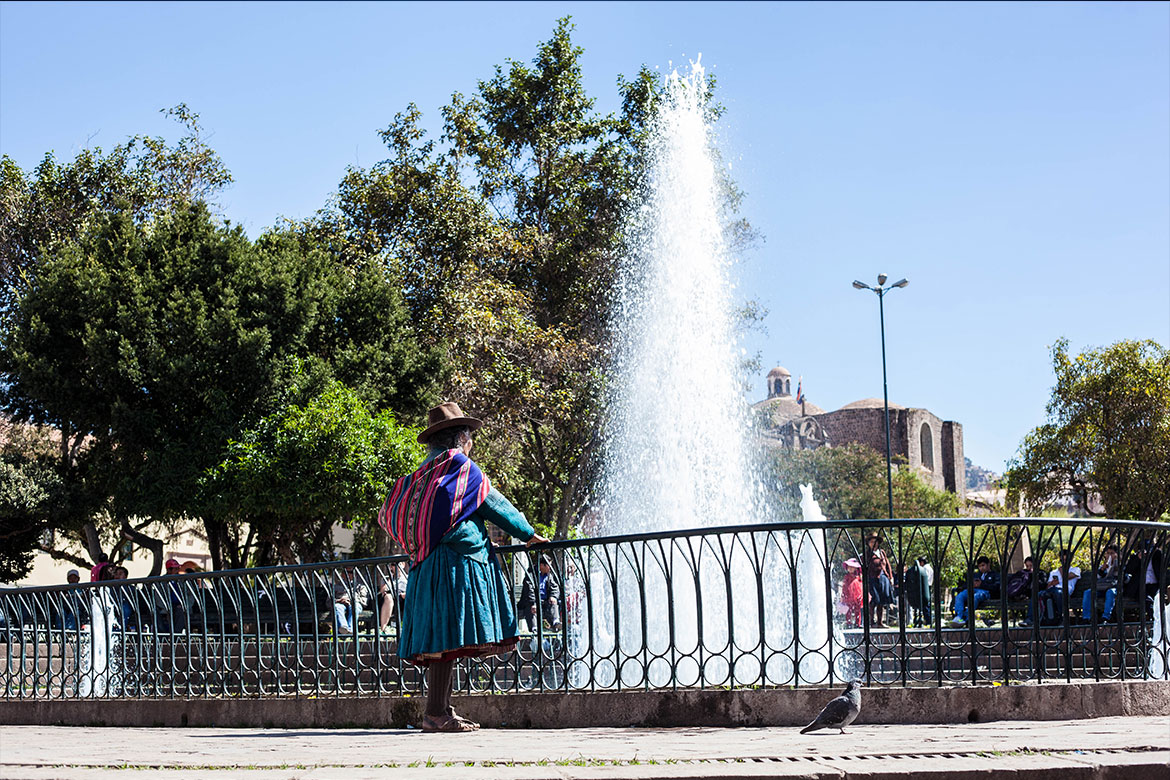
LATAM Airlines services several direct flights between Lima (LIM) (1 hour 20 minutes) as well as one or two between Arequipa (AQP) (1 hour) and Puerto Maldonado (PEM) (50 minutes) each day.
It is also possible to travel to Cusco via bus from cities like Arequipa (10 hours), Puerto Maldonado (10 hours), Puno (10 hours), and Lima (21 hours).
One of the Cusco region’s most important birding sites, Huacarpay Lake comprises part of the Lucre-Huacarpay Wetlands. This cluster of five wetlands (one only seasonally), two rivers, and two swamps are designated by the Ramsar Convention as a “wetland of international importance.” They play a critical role in supporting 140 bird species, three of which are endemic. In addition to aquatic birds, you’ll also have the opportunity to observe hummingbirds within the Lucre-Huacarpay Wetlands, making for a truly remarkable experience. The Lucre-Huacarpay Wetlands are nestled beyond the pre-Inca Piquillacta ruins, which form the Southern Valley Circuit, along with the Tipon ruins and the 16th-century Andahuaylillas Baroque church.

Situated on a vast elevational gradient, Abra Málaga Private Conservation Area is dedicated to preserving the spectacular diversity of ecosystems found within its 2,602 acre (1,053 ha) reserve. By protecting its Polylepis forests, puna grasslands, humid cloud forests, wetlands, and rivers, Abra Málaga plays a critical role in maintaining the populations of several threatened species of birds. Due to its proximity to Machu Picchu, the reserve is popular with both serious and casual birdwatchers. During your visit, also keep an eye out for the vulnerable Andean bear (Tremarctos ornatus) and vulnerable dwarf brocket (Mazama chunyi). With stunning views of the snow-capped Veronica mountain, Abra Málaga is also appreciated for its mountain biking and trekking.

Celebrated as on the “New7Wonders of the World,” Machu Picchu is the most visited tourist destination in Peru. Located on a mountaintop overlooking the Urubamba River, this 15th-century Inca citadel attracts visitors worldwide, primarily to learn about its fascinating history. However, a privileged location in Peru’s montane cloud forests also offers an astounding birding in Peru experience. Up to 443 species, including 15 endemic birds of Peru, can be observed in the Machu Picchu Historic Sanctuary. For optimal birding, trek along the 4-day or 2-day Inca Trail through a wide variety of ecosystems (Note: permits sell out months in advance and is closed in February for maintenance), through the Mandor Valley to Mandor Waterfall, from the Hydroelectric plant to the Ahobamba Valley, or from the Hydroelectric plant to “Puente Ruinas.”*
*Extreme caution should be taken on the path from the Hydroelectric plant’s path to Puente Ruinas as you will walk along the same train tracks that ferry passengers to and from Machu Picchu.

Machu Picchu Tours:
Due to its year-round warm weather, the small Andean city of Abancay and the surrounding area has been deemed “The Eternal Springtime Valley.” While not a classic tourist hotspot, Abancay and the broader Apurímac Region have a rich history dating back to the Chanka culture, a pre-Incan civilization. Today, visitors can visit both Chanka archaeological sites and those dating back more recently to Incan times. Some of these sites, like Choquequirao, offer terrific birding as do nearby natural protected areas.
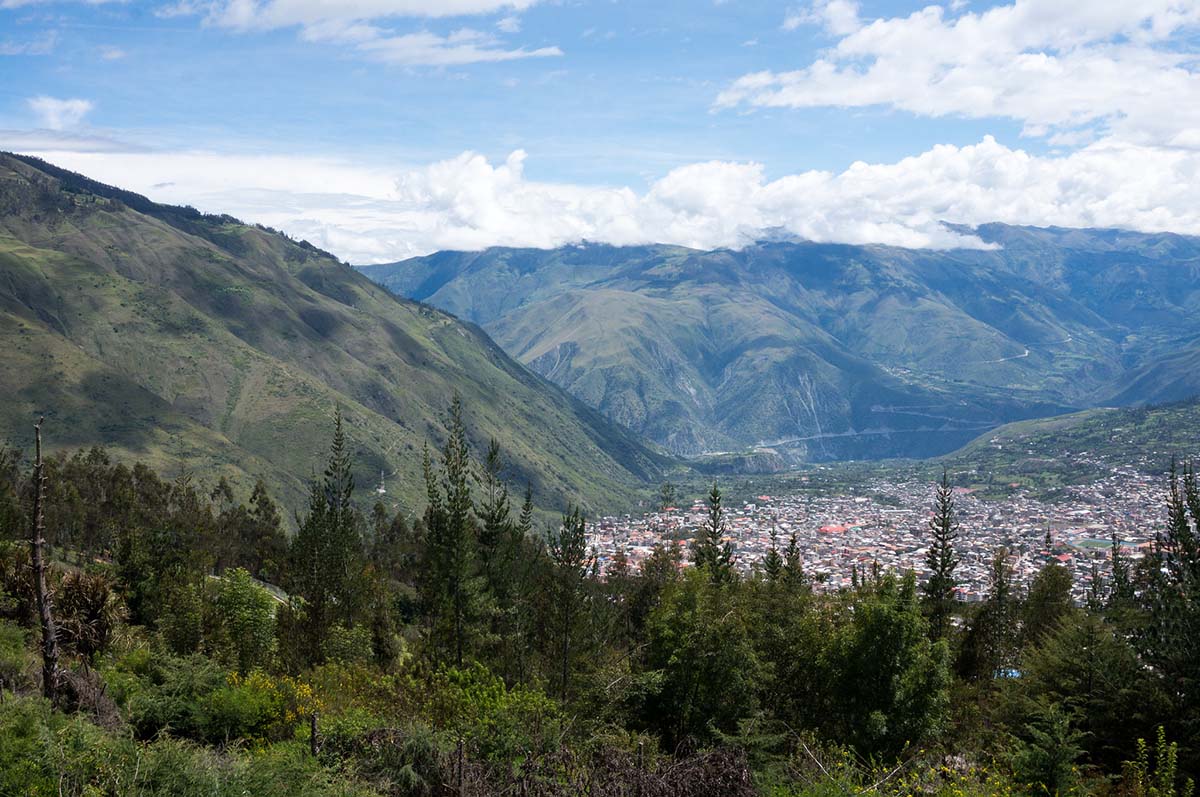
Abancay is reachable via bus from many cities, including Cusco (5 hours), Ica (11 hours 30 minutes), and Lima (16 hours).
High-elevation grasslands and montane forests primarily represent the flora in Ampay National Sanctuary, with 41% of the montane forest colonized by the conifer Intimpa (Podocarpus glomeratus). The main objective of the Ampay National Sanctuary is to preserve this conifer species in addition to the Pachachaca River basin. This 8,984 acre (3,636 ha) reserve is inhabited by 195 species of birds, 10 of which are endemic. Some of the best birding includes a 9-hour hike through the forest and past several lakes. As well as a 4-hour excursion from the small town of Kerapata, leading to Faccha Waterfall. Venture through a diverse array of ecosystems where you may see hummingbirds, thrushes, eagles, ducks, and more.

Although it is one of Peru’s most magnificent archaeological sites, Choquequirao receives far fewer visitors than its sister site, Machu Picchu, due to its more isolated location. To reach the site, travelers must embark on a 4-day hike (39 mi/63 km) beginning and ending in the small town of Cachora, or an arduous 8+ day trek (62 mi/100 km) beginning in Cachora and ending at Machu Picchu. However, to create access for more visitors, the Peruvian government plans to install a cable car system. In the meantime, adventurous travelers can complete the multi-day journey to Choquequirao and see impressive birdlife along the way.
One study separated the park into two zones: 1) the Sunchupata-Marampata zone, where 41 bird species were recorded, and 2) the Choquequirao Archaeological Park zone, where 53 species were observed. While the trek to this Inca site is challenging, the splendid landscapes, wildlife, and moments of solitude make it very rewarding.

Manú National Park and Biosphere Reserve is the world’s largest rainforest reserve. It is inhabited by an unparalleled level of biodiversity spread across three ecosystems. Patterson et al. identified 1,005 species of birds and 222 species of mammals within this UNESCO World Heritage Site. Equally as astonishing, more than 3,000 species of plants have been confirmed. The birding is phenomenal, both within its 5,665,647 acres (2,292,806 ha) and along its outer edges (e.g., Manu Road)—it truly is a birder’s paradise. Due to both the remoteness of Manú and the presence of native tribes protective of their land, the reserve has remained mostly undisturbed by human activity. To further protect these native peoples and their forests, the reserve has been divided into four zones with one, the “restricted zone,” dedicated to tourism. Visitors can only enter the park with approved tour operators.

There is no road access within the boundaries of Manú National Park and Biosphere Reserve. A small airstrip near the village of Boca Manú is primarily reserved for researchers and government officials. Instead, travelers can reach Manú by boat from Puerto Maldonado or by car + boat from Cusco, depending on their jungle lodge’s location.
The road to Manú spans 61 miles (98 km) from Abra Acjanaco to Salvación, sometimes bordering the southeastern border of Manú National Park. Dotting the road are several lodges and biological stations where travelers can partake in some of the world’s most diverse birding. 6+ days can easily be spent exploring this stretch of road.
The road is divided into three sections: 1) Upper Manú Road; 2) Mid Manú Road; and 3) Lower Manu Road.
The first part of the Manú Road begins at Abra Acjanaco, a high mountain pass located at 11,483 feet (3,500 m). Here you will enter a puna ecosystem (montane shrublands and grasslands) where you may find the endemic Creamy-crested Spinetail (Cranioleuca albicapilla) and endemic Junín Canastero (Asthenes virgata). There are also small pools inhabited by wetland bird species.
The road descends (9 mi/15 km) to the Wayqecha Cloud Forest Research Station, located at 6,500–9,875 feet (2,000–3,010 m). A lush, cloud forest ecosystem supports an outstanding level of biodiversity. Nine miles of trails, on-site feeders, and a 144-foot (44 m) elevated canopy walkway allow for optimal birding.
Upper montane forest dominates the last part of the upper Manú Road, near Pillahuata. This is an excellent location to observe tanagers. The Scarlet-bellied Mountain Tanager (Anisognathus igniventris), Blue-capped Tanager (Sporathraupis cyanocephala), and Grass-green Tanager (Chlorornis riefferii) are some of the most common tanagers seen near Pillahuata.

Birding stops are clustered on the road from Pillahuata to San Pedro. A combination of slowly driving/walking down the road will allow you to bird from these world-renowned sites. Near San Pedro, there are several lodges where you can stay. We recommend the Cock-of-the-Rock Lodge due to its trail system, hummingbird feeders, and privileged location near an Andean Cock-of-the-Rock lek. By registering in advance, travelers can access the lek either for morning or afternoon shifts and marvel at the competitive breeding displays of the male Andean Cock-of-the-Rocks, the national bird of Peru. While sightings are not guaranteed, this lek is one of the world’s most reliable and a highlight of the Manú Road.
View this bird’s incredible mating display from near the Cock-of-the-Rock Lodge here.

The elevation lowers as you continue on the Manú Road toward Pillcopata and Salvación. You may start to spot lowland species like the Rusty-fronted Tody-flycatcher (Poecilotriccus latirostris) and Chestnut-bellied Seedeater (Sporophila castaneiventris). The Villa Carmen Biological Station and Reserve is located just a 4-minute drive from the small town of Pillopata. Its 7,574 acres (3,065 ha) of land are situated on a steep elevational gradient. Therefore, it contains a variety of habitats and remarkable biodiversity for birding in Peru.
Both researchers and tourists are invited to explore over 25 miles of trails through old-growth forest, secondary forest, lower montane forest, and along small waterways. There are also feeding stations and a small pond where Hoatzin (Opisthocomus hoazin) congregate, all observable from the comfortable lodge. In total, 600 species of birds have been recorded in this conservation area, making it an absolute delight for those wanting to spot wildlife in Peru.

The Madre de Dios River begins in the small town of Atalaya, at the border of Peru’s Cusco and Madre de Dios regions. The river flows in a northerly direction until Boca Manú, where the Manú River, a tributary, joins it and curves east toward Puerto Maldonado. There are several lodges and reserves along this stretch of river that showcase why birding in Peru is so extraordinary.
We recommend the Manú Learning Centre (MLC). This research station and lodge is located within the 1,589 acre (643 ha) Fundo Mascoitania Reserve operated by the Peruvian NGO, CREES (Conservation, Research & Education towards Environmental Sustainability). CREES is dedicated to working with local communities on sustainable development projects to conserve Manú National Park and reduce poverty. A clay lick frequented by colorful parrots and macaws, including the vulnerable Blue-headed Macaw (Primolius couloni), sets the MLC apart from other lodges. Over 480 species of birds have been recorded at this lodge and research hub. As the MLC functions as both a research center and lodge, tourists are able to experience firsthand the essential biological and conservation research being conducted. A stay at Manú Learning Centre truly is a fascinating learning experience.
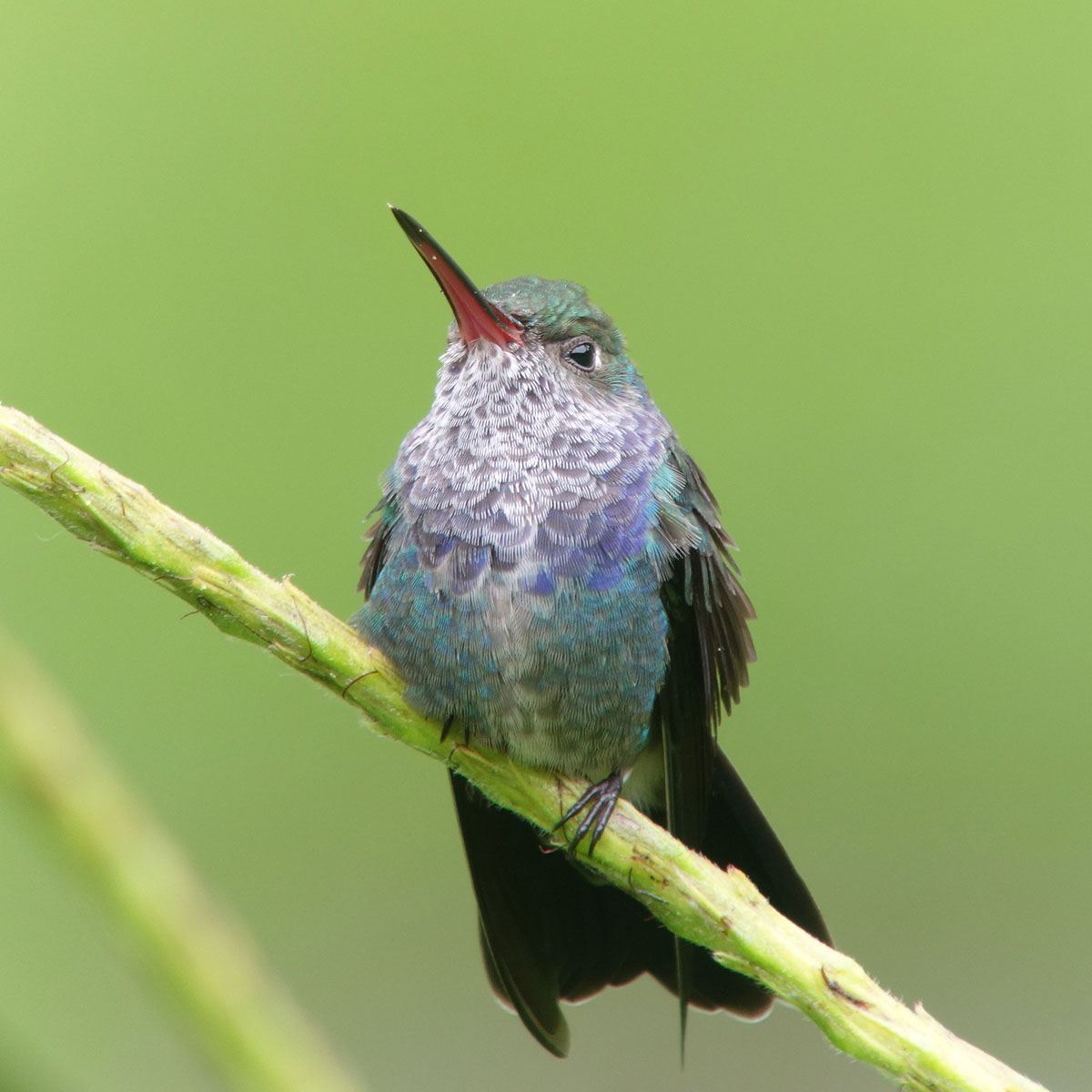
From Boca Manú, the Madre de Dios River flows east to the city of Puerto Maldonado. This area is one of the top places to see macaws. At the Blanquillo Macaw Clay Lick, visitors observe macaws, parrots, and parakeets from a camouflaged hide only 164 feet (50 m) away. Cocha Blanco and Cocha Camungo are two oxbow lakes included on many Amazon birding tours in Peru due to their high wildlife diversity. The Manú Wildlife Center and Los Amigos Biological Station and Birding Lodge offer the best birding experiences in this area. Respectively, 574 and 597 bird species have been recorded at Manú Wildlife Center and Los Amigos Biological Station and Birding Lodge. This area certainly offers an unparalleled wildlife experience!

The Manú River extends through Manú National Park until it flows into the Madre de Dios River at Boca Manú. Accompanied by a licensed tour operator, travelers can reach this part of the Peruvian jungle only by boat. Keep an eye out for nesting birds on the riverbanks as you travel upriver. Two oxbow lakes, Cocha Salvador and Cocha Otorongo, provide excellent birding in Peru. Cocha Otorongo even has a 66-foot (20 m) observation tower that overlooks the lake—an ideal birding spot!

By far the most tourist-friendly Amazon destination in Peru, the Tambopata National Reserve and lodges located outside of Puerto Maldonado along the Madres de Dios River offer a spectacular birding experience. Approximately 600 species of birds have been recorded in this 678,773 acre (274,690 ha) reserve. Depending on which lodge you choose, your birding in Peru tours may include Macaw clay lick excursions or hikes to oxbow lakes.

LATAM Airlines offers a small number of direct flights between Puerto Maldonado and Cusco (50 minutes) and Lima (1 hour 40 minutes) each day. It is also possible to travel via bus to/from Cusco (10 hours).
Travelers will be especially pleased with the birding along the Madre de Dios River section between Puerto Maldonado and Peru’s border with Bolivia. There are a variety of lodges here that range in style and comfort from rustic to luxurious. A 1-1.5 hour (5 mi/3 km) hike along a flat (and sometimes muddy) trail leads to Lake Sandoval, one of this area’s best spots for birding. Hoatzin (Opisthocomus hoazin), Rufescent Tiger-heron (Tigrisoma lineatum), and Cocoi Heron (Ardea cocoi) are the most observed species here. Apart from birds, you may also observe black caiman, giant river otters, and howler monkeys.

Inkaterra, a Peruvian sustainable travel company, operates two lodges (Reserva Amazonica and Hacienda Concepcion) and a field station along the Madre de Dios River. One of the signature excursions offered to guests of these three properties is the Inkaterra Canopy Walkway. A series of seven bridges totaling 1,129 feet (344 m), two towers, and eight platforms rise up to 125 feet (38 m) into the rainforest canopy. This allows visitors to gain a more precise understanding of the biological processes that occur near the highest parts of the rainforest.

A tributary of the Madre de Dios River, the Tambopata River flows southwesterly from Puerto Maldonado through Tambopata National Reserve and into Bahuaja Sonene National Park. Three lodges operated by the Peruvian company Rainforest Expeditions offer travelers the most remote access to Tambopata National Reserve of any tourist lodge. In fact, its Tambopata Research Center (TRC) is the only lodge located within the entirety of the Tambopata National Reserve. The TRC is the Tambopata Macaw Project’s headquarters, which focuses on the conservation and ecology of macaws. Once threatened with extinction, the populations in this part of Peru are now recovering.
In the wild, guests of TRC can observe macaws at the Colorado Clay Lick while travelers staying at Rainforest Expeditions’ Refugio Amazonas Lodge visit the closer Chuncho Clay Lick. Other bird species can be observed from Refugio Amazonas’ and Posada Amazonas’ 180 feet (60 m) tall canopy tower and from their nearby Tres Chimbadas Lake.
Unable to travel, but still want to experience the wonder of the astonishment of the Amazon Rainforest? Rainforest Expeditions is now offering virtual birding in Peru experiences. Bring the Amazon to you by joining one of their expert guides on a live tour to a macaw clay lick and other rainforest highlights!

Amazon Rainforest Tours:
Peru’s central birding route begins along the coast in and the capital city of Lima and the surrounding desert coast. Traveling north, the course enters the Cordillera Blanca mountain range, where you will find Peru’s highest peak and some of its most striking scenery. Continuing onward to the central jungle, many seldom visited, yet ecologically diverse sites offer some of the best opportunities for adding endemic species to your life list.
*Individual birding site elevation and ecosystem classifications have been obtained from Peru’s Export and Tourism Promotion agency – PROMPERÚ’s official guide, unless indicated otherwise.
The bustling capital of Peru, Lima is not commonly associated with bird-watching or nature tourism. However, its location along the nutrient-rich Humboldt Current creates unique ecosystems inhabited by several endemic and interesting species. While birding in Lima, Peru we recommend also taking advantage of its world-renowned culinary scene and learning about its fascinating history. Read more about how to explore Lima here.
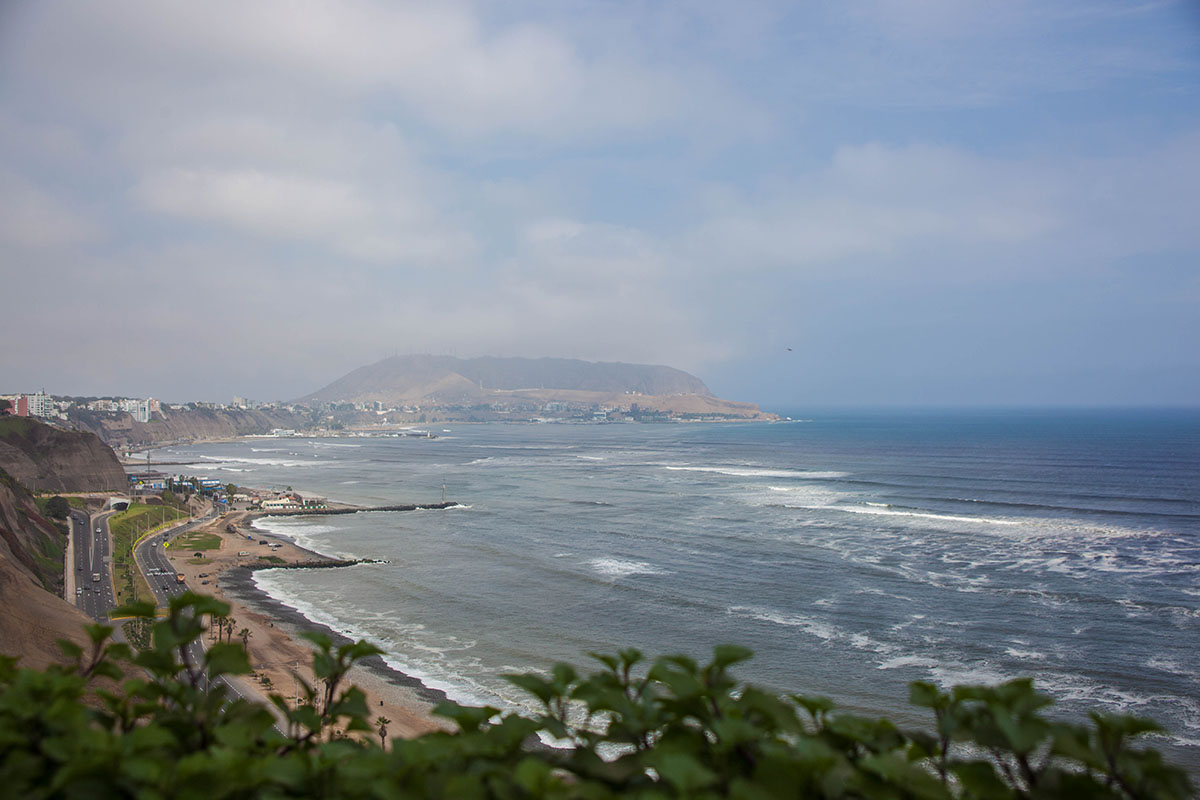
Almost all international flights to Peru arrive to and depart from Lima’s Jorge Chávez International Airport (LIM). This same airport also connects Lima with the other airports located in Peru. From the Lima airport, it is about a 45–90-minute drive to Miraflores and Barranco, Lima’s tourist-friendly districts.
Lachay National Reserve protects an area of the fragile lomas ecosystem. These coastal desert hills are covered by lush green vegetation from June to October, a result of fog carried from the Pacific Ocean. The rest of the year, the hills are brown and barren. However, birding is excellent at any time of year. This 12,528 acre (5,070 ha) reserve includes a hiking circuit (approximately 2 hours) that is quite popular with residents of Lima. Travelers with a keen interest in Peru’s ancient cultures will also appreciate the pre-Columbian petroglyphs and paintings in the northern part of the reserve.

The Reserva Nacional Sistema de Islas, Islotes y Puntas Guaneras (RNSIIPG) is a series of 22 islands and islets and 11 points that stretch along the entirety of Peru’s coast. Included in this reserve are the Palomino Islands, a cluster of five islands and islets located off the coast of Peru’s Callao Region. (Callao is a separate region from Lima, but is part of the Lima metropolitan area). From Callao Port, travelers take a ~1-hour 30-minute boat ride to the islands. Here you will observe various seabirds, including the vulnerable Humboldt Penguin (Spheniscus humboldti) and the endemic Peruvian Booby (Sula variegata). You will also encounter hundreds of South American Sea Lions (Otaria flavescens) in and out of the water. If time permits, we also recommend visiting Callao’s Ventanilla wetlands, where you can observe up to 120 species of migratory and resident birds.

Located in Lima’s Chorrillos district, Pantanos de Villa Wildlife Refuge protects 651 acres (263.27 ha) of marsh and brackish water lagoon ecosystems. It plays a vital role in Lima’s ecosystem as the city’s only protected natural area. On the global scale, Pantanos de Villa has been recognized as a Ramsar Convention “wetlands of international importance.” Up to 208 species of birds (70% migratory) have been recorded at Pantanos de Villa. Birdwatching is the most popular activity at this Peruvian wildlife refuge. As a result, two 1-hour and one 45-minute routes have been created within the refuge specifically for birding in Peru.

The capital of Peru’s Ancash Region, Huaraz is the gateway to Huascarán National Park, located within the Cordillera Blanca mountain range. This UNESCO World Heritage Site is renowned for its magnificent mountain scenery and turquoise-blue lakes. A favorite of mountaineers, the Huascarán mountain is the highest peak in Peru, located at a staggering 22,205 feet (6,768 m). However, you don’t need to be an expert trekker to enjoy the park’s fascinating birdlife. There is some fantastic birding in Peru located just along and off the roads that venture through the park. Some of Peru’s coziest lodges are also found here and provide the ideal base for a high-elevation birdwatching tour.

Huaraz is only accessible via land. From Lima, several bus companies offer 8-hour 30-minute journeys to Huaraz. Upon arrival in Huaraz, continue 1 hour 15 minutes (35 mi/57 km) north to the town of Yungay. The best birding sites are located outside of this town.
From Yungay, continue by car for 1 hour until you reach Llanganuco Chinancocha, the first of the twin Lagunas de Llanganuco. Marvel at the bright, aquamarine water and towering snow-capped peaks. The surrounding Polylepis forest is prime habitat for several endemic bird species. Search for these species on the lakes’ trail system. The high elevation makes walking more strenuous; however, the area is mostly flat.

Situated between the Huascarán and Huandoy peaks, Abra Portachuelo is inhabited by several important bird species. From the Llanganuco lakes, continue eastward by car for 35 minutes. This is one of the best sites to spot the vulnerable and endemic White-cheeked Cotinga (Zaratornis stresemanni). Birdwatching is possible from both the roadside and along hiking trails that venture through patches of Polylepis forest. The landscape of this part of Peru is quite striking and visually powerful. Snow-capped mountains, deep valleys, and turquoise lakes create the backdrop for a memorable birding expedition.

Huánuco and Tingo María are the base cities for travelers visiting Tingo María National Park and for those birding the section of 18A that stretches from Huánuco to the city of Tingo María. Spanning 75 miles (121 km), there is an astonishing amount of biodiversity and many endemic bird species found along the road linking these two cities. It is important to note that this part of Peru has not been as developed for tourism as more popular destinations along the main birding routes. You will not find luxury accommodations here, however, you will observe many interesting bird species and explore a part of Peru where few other travelers venture.

Star Perú and ATSA Airlines offer daily flights between Lima and Huánuco (1 hour). By bus, it is a 10-hour journey between Lima and Tingo María.
Established in 1965, Tingo María National Park is an 11,804-acre (4,777 ha) protected area. It is devoted to preserving “La Bella Durmiente” (Sleeping Beauty), a mountain range in the park whose shape resembles a sleeping woman, as well as la “Cueva de las Lechuzas” (Cave of the Owls). Despite its name, the cave is inhabited by a colony of Oilbirds. While many interesting bird species inhabit Tingo María’s cloud forests, these nocturnal birds are the primary birding attraction. The Oilbirds are audible immediately upon entering the cave and visible in and around their day nests.

Note: The fungus, Histoplasma capsulatum, is present in “Cueva de las Lechuzas.” Read more about the associated infection here and speak with your physician before travel.
The endemic Pardusco (Nephelornis oneilli) was discovered in Unchog Forest. This pristine site has a relatively remote location. An approximately six-hour hike is required to reach the site. Due to the length of the journey and remoteness of the area, camping is recommended. This is when traveling with a travel agency pays off. Your guide will coordinate mules to carry supplies and the hiking team will set up the tents and prepare dinner. This will allow you to make full use of the time and hopefully add several endemics to your life list while birding in Peru!

Carpish Tunnel is a 1,312 feet (400 m) long tunnel built along Highway 18A between Huánuco and Tingo María. There is a distinct difference in ecosystems on either side of the tunnel. The side closer to Huánuco has experienced significant deforestation, whereas the side closer to Tingo María is a lush and humid cloud forest and where you will begin your birding adventure. Several trails weave through the cloud forest. Here you may see mixed-species flocks. You can also bird from the road. Carpish Tunnel is one of the best cloud forest sites in Peru and you can easily spend two or three days birding here.

After visiting Carpish Tunnel, continue approximately five minutes (2.9 mi/2.6 km) to Paty Trail. This steep and sometimes muddy path descends through an area of bamboo, past a school and soccer field, and finally through the cloud forest to the main road below. Although Paty Trail is not a protected area and experiences degradation, it is one of the world’s best birding sites where you can observe several endemic species. The birding is so diverse that you could spend two or three days exploring this site.

Founded in the 1800s by settlers of German and Austrian ancestry, Oxapampa is a city located in Peru’s central high jungle. There is no airport connecting Oxapampa with the rest of Peru; therefore, Oxapampa remains off the classic tourism trail despite its rich natural wonders. There are many endemic bird species found within the city’s surrounding natural protected areas, including the Yanachaga–Chemillén National Park. Oxapampa is an ideal destination for travelers looking for an unparalleled and epic adventure.

From Lima, it is a 9-hour bus journey to Oxapampa. Oxapampa can also be reached by road from Tingo Maria (9 hours 30 minutes) and Pucallpa (7 hours).
The Yanachaga–Chemillén National Park constitutes the core of the UNESCO-recognized Oxapampa-Ashaninky-Yánesha Biosphere Reserve. Established in 2010, this reserve aims to preserve central Peru’s remaining undisturbed jungle ecosystems. Yanachaga–Chemillén National Park is particularly interesting due to its designation as a “Pleistocene refugia,” which explains its high biodiversity. 527 species of birds have been recorded in Yanachaga–Chemillén, including seven endemic species in San Alberto alone, one of the park’s four tourist zones, which is particularly popular with birdwatchers. The Yanachaga–Chemillén National Park certainly offers birders a unique experience in a part of Peru privileged with such rich birding.

Bosque de Churumazú is a private conservation area and ecotourism project established in 2017. In total, 170 species of birds, 6 of which are endemic, have been recorded within the reserve. Explore the idyllic cloud forests with an expert guide who, in addition to identifying flora and fauna, will share with you the importance of the cloud forest and discuss the cultures of the Yanesha’ native community and Austro-German settlers.
A trail system totaling 1.9 miles (3 km) has been created, as well as two elevated observation decks, which certainly enhance birding opportunities. Visitors have the option to customize their tour with regard to trail length and difficulty. Opt for a day tour or explore the forest over multiple days. On-site accommodations include the reserve’s private cabin or private rooms in the property owner’s home. Dedicated to empowering the local community through education, 100% of the ecotourism project’s net profits are reinvested in the local community through environmental education programs.

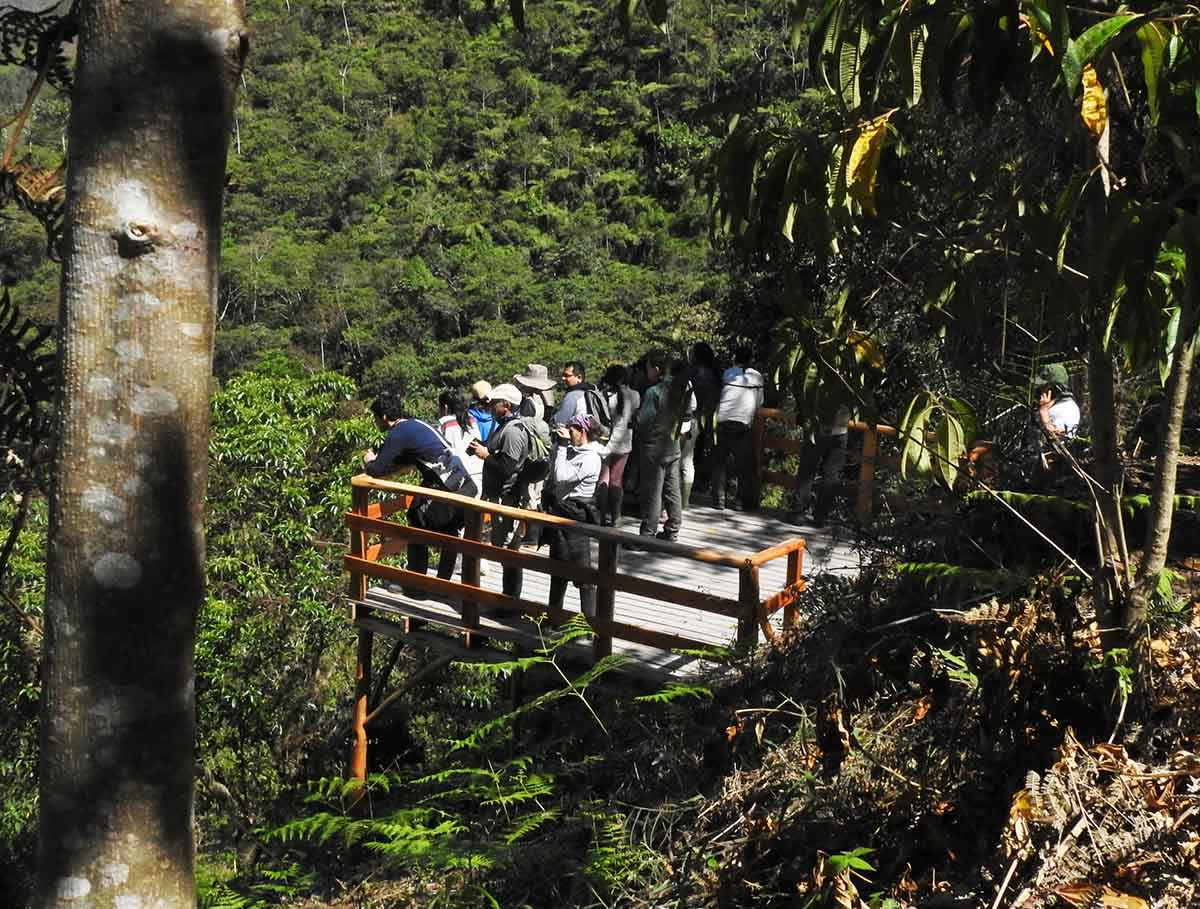
Scho’llet Forest is a municipal conservation area near the Yanachaga–Chemillén National Park. The reserve is devoted to conserving its scrub (sclerophyll) forests and maintaining its ecosystemic water catchment, which services Oxapampa and Villa Rica. 128 species of birds, 7 of which are endemic, are found within its 3,615 acres (1,463 ha) forests. The forests also house an impressive 96 species of orchids. Scho’llet Forest’s unique ecosystems play an important role in supporting the local communities and offer a remarkable bird-watching experience for visitors to Oxapampa and Villa Rica.

While in Oxapampa, consider staying at Ulcumano Ecolodge. Ulcumano Ecolodge comprises six charming cabañas situated on 341 acres (138 ha) of montane forest. Explore a series of hiking trails and ascend a 66-foot (20 m) high canopy bridge that spans 787 feet (240 m). With 236 recorded species of birds, the birding is phenomenal. Other activities include night walks, waterfall rappelling, and ziplining from 98 feet (30 m) above the forest floor. If pressed for time, you can just spend the day; however, we certainly recommend spending a couple of nights at this wonderful ecolodge.

Peru’s Northern birding route spans over 400 miles along its northern coast, through the Andes Mountains, and into its northern lowland Amazon rainforest. Although teeming with archaeological sites older than Machu Picchu, beautiful beaches, and rich biodiversity, this part of Peru is considered off-the-beaten-path. The northern birding route is noted for its high endemism, particularly concerning hummingbirds.
*Individual birding site elevation and ecosystem classifications have been obtained from Peru’s Export and Tourism Promotion agency – PROMPERÚ’s official guide, unless indicated otherwise.
Located near the Peru-Ecuador border, Tumbes is the name of both a region and city well known among Peruvians for its picturesque beaches, surfing, and whale-watching. Less than a two-hour drive from some of the country’s most popular beaches are two reserves that possess unique ecosystems found nowhere else in Peru.

From Lima, fly 1 hour 50 minutes to Tumbes’ Capitán FAP Pedro Canga Rodríguez Airport (TBP). We recommend selecting a hotel in Mancora, a tourist-friendly beach town that provides easy access to Cerros de Amotape National Park and Manglares de Tumbes National Sanctuary. Mancora is approximately a 1-hour 30-minute drive from Tumbes.
Totaling 7,341 acres (2,972 ha), Manglares de Tumbes National Sanctuary houses Peru’s largest mangrove forest. Five mangrove species and 148 species of birds are protected in this national sanctuary which possesses a unique ecosystem. Towering trees border the waterways that visitors explore on kayaks or canoes. Birds can be observed from on the water or trails on the Almejas, Correa, Matapalo, and Roncal islands. This area is particularly attractive for birders with a keen interest in migratory and aquatic birds.

Cerros de Amotape National Park is located in both Peru’s Tumbes and Piura regions. This 375,026 acre (151,767 ha) protected area harbors ~400 species of birds. The park comprises part of the Amotapes mountain range and two of Peru’s eleven ecoregions: the Pacific Tropical Forest and the Equatorial Dry Forest. A small patch of the Pacific Tropical Forest is located in the northeastern portion of the park. Here you will marvel at trees that tower more than 100 feet ( 30 m)—the most massive coastal trees found in Peru. Equatorial Dry Forest covers the rest of the park. Its lagoons and wetlands are prime birdwatching spots.

A northern coastal city, Chiclayo’s dry, warm, and sunny climate makes it a pleasant travel destination. The nearby dry forests offer a unique birding experience. Additionally, some of Peru’s most fascinating Moche and Chimu archaeological sites are located near Chiclayo, including Huaca del Sol (Moche) and Chan Chan (Chimu).

From Lima, fly 1 hour 25 minutes to FAP Captain José Abelardo Quiñones González International Airport (CIX). Buses also connect Chiclayo from Lima and neighboring cities (e.g., Piura (3 hours), Trujillo (4 hours), Chachapoyas (9 hours), etc.).
Chaparri Ecological Reserve is a community-owned private conservation area and ecotourism project. In Peru, this is one of the best places to observe the vulnerable Andean Bear (Tremarctos ornatus) (also called the Spectacled Bear). In total, seven Andean bears have been rescued from captivity and now inhabit semi-wild enclosures within the reserve. However, wildlife observation is not limited to bears at Chaparri. In fact, this 85,034 acre (34,412 ha) dry forest reserve is also inhabited by various bird species. Most notably, as a result of a reintroduction project, the reserve is now inhabited by approximately 100 white-winged Guans (Penelope albipennis). For the full experience, we recommend that visitors spend one to three nights at the Chaparri Ecolodge. The ecolodge possesses a charming and rustic atmosphere, inspired by and constructed in harmony with its ecological surroundings. From here, guests can explore the dry forest by way of a network of trails.

Striking landscapes and rich biodiversity are representative of Bosque de Pómac Historic Sanctuary. Surrounding the Lercanlech River, this protected area is primarily covered by carob trees—some older than 500 years! Over thirty adobe pyramids and mounds constructed by the Sicán culture are also scattered throughout the historic sanctuary’s 13,188 acres (5,887 ha), the most iconic being Huaca El Loro. One of the most elusive birds in Peru, the Peruvian Plantcutter (Phytotoma raimondii), inhabits Bosque de Pómac. Find this endemic species as well as many more while birding in Peru along the Cortarrama route.

Trujillo is Peru’s third most populous city and the capital of the Lambayeque region. In addition to birdwatching sites, several important archaeological ruins from the Moche and Chimu cultures are located outside of this coastal city, including Huaca del Sol (Moche) and Chan Chan (Chimu). The city’s historic center is admired for its architecture and is a tentative UNESCO World Heritage Site.

Trujillo’s Capitán FAP Carlos Martínez de Pinillos International Airport (TRU) can be reached via direct flight (1 hour 10 minutes) from Lima or by bus from many cities, including Trujillo (4 hours) and Lima (9 hours).
Lomas are coastal desert hills located in northern Chile and Peru. Despite receiving virtually no rain, they are covered by vibrant green vegetation sustained by mist and fog from the nearby Pacific Ocean. Around 100 lomas exist, each with a delicate ecosystem. Lomas de Cerro Campana is no different. This natural area is home to 38 species of birds, four of which are endemic to Peru. Due to anthropogenic activities like non-metallic mining, fires, farming, and urban sprawl, Lomas de Cerro Campana is under threat. As a result, the National University of Trujillo is creating conservation strategies to protect this unique ecosystem.

The small town of Sinsicap is located about two hours from Trujillo. Birders have the opportunity to explore the montane scrub environment in the surrounding Sinsicap Valley. Although a relatively small site, the chance to see the endemic and endangered Russet-bellied Spinetail (Synallaxis zimmeri) makes the trip well worth it.

Located 6 hours 30 minutes from both Cajamarca and Trujillo, El Molino is very much off the beaten path. However, for travelers who wish to see the purple-backed sunbeam (Aglaeactis aliciae), a trip to El Molino is a must. This endemic and endangered species of hummingbird is not as likely to be found elsewhere.

The Andean highland city of Cajamarca is the capital of Peru’s Cajamarca region. Although most tourists to Peru do not visit this city, it has a fascinating history and impressive mountain scenery. The city of Cajamarca is where the Massacre of Cajamarca took place. In 1532, the Spanish captured and killed Atahualpa, the last Inca emperor, signifying the Inca Empire’s conquest.
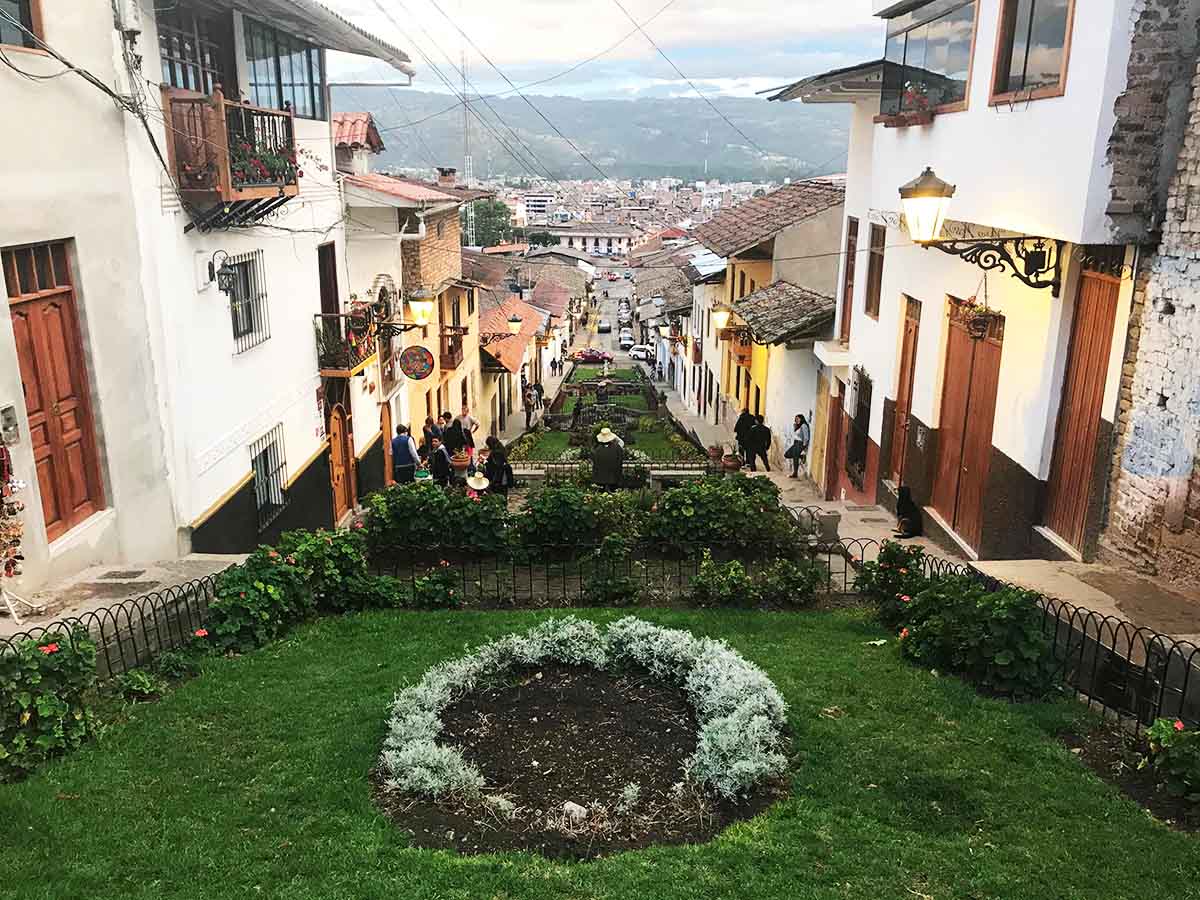
There are direct flights between Lima and Cajamarca’s Mayor General FAP Armando Revoredo Iglesias Airport (CJA) (1 hour 15 minutes). The city is also accessible by road from Chiclayo (5 hours 30 minutes), Trujillo (5 hours 30 minutes), Jaén (7 hours 30 minutes), Chachapoyas (8 hours), and Lima (14 hours).
Patches of forest dot the high Andean farmland near Cruz Conga. Within these forests, birders have the opportunity to spot the Cajamarca subspecies of the Rufous Antpitta (Grallaria rufula cajamarcae). Scientists suggest that this subspecies is a candidate to be classified as a separate species.

The Sangal Canyon and Chonta River are located east of the city of Cajamarca. This montane scrub environment is the best location to observe the Grey-bellied Comet (Taphrolesbia griseiventris), an endangered species of hummingbird endemic to northwestern Peru. On the way, stop at the Ventanillas de Combayo, a 3,500-year-old burial site built into the mountainside and the Baños del Inca, thermal springs that were frequented by Inca royalty.

Abra Gavilan is a high mountain pass located 22 miles (35 km) south of Cajamarca. It has a montane scrub environment where birders have the chance to observe the Unicoloured Tapaculo (Scytalopus unicolor) and the Rufous-backed Inca-finch (Incaspiza personata), both species which are endemic to Peru.

The 143-acre (58 ha) San Nicolás Lagoon and the surrounding montane scrub area are excellent destinations for observing Andean aquatic birds. In certain months, you may also spot migratory species, like the Spotted Sandpiper (Actitis macularius), which visits in August and May. On the eastern side of the lagoon is Coyor Hill. Situated on top of the hill are the remains of the last stronghold of the Cajamarca culture, Collor Fort. A hike up the hill is worthwhile to learn more about the local history and for splendid views of the lagoon. Several restaurants and small lodges are located on the shore of the lake. For added adventure, you can canoe, fish, trek, and bike.
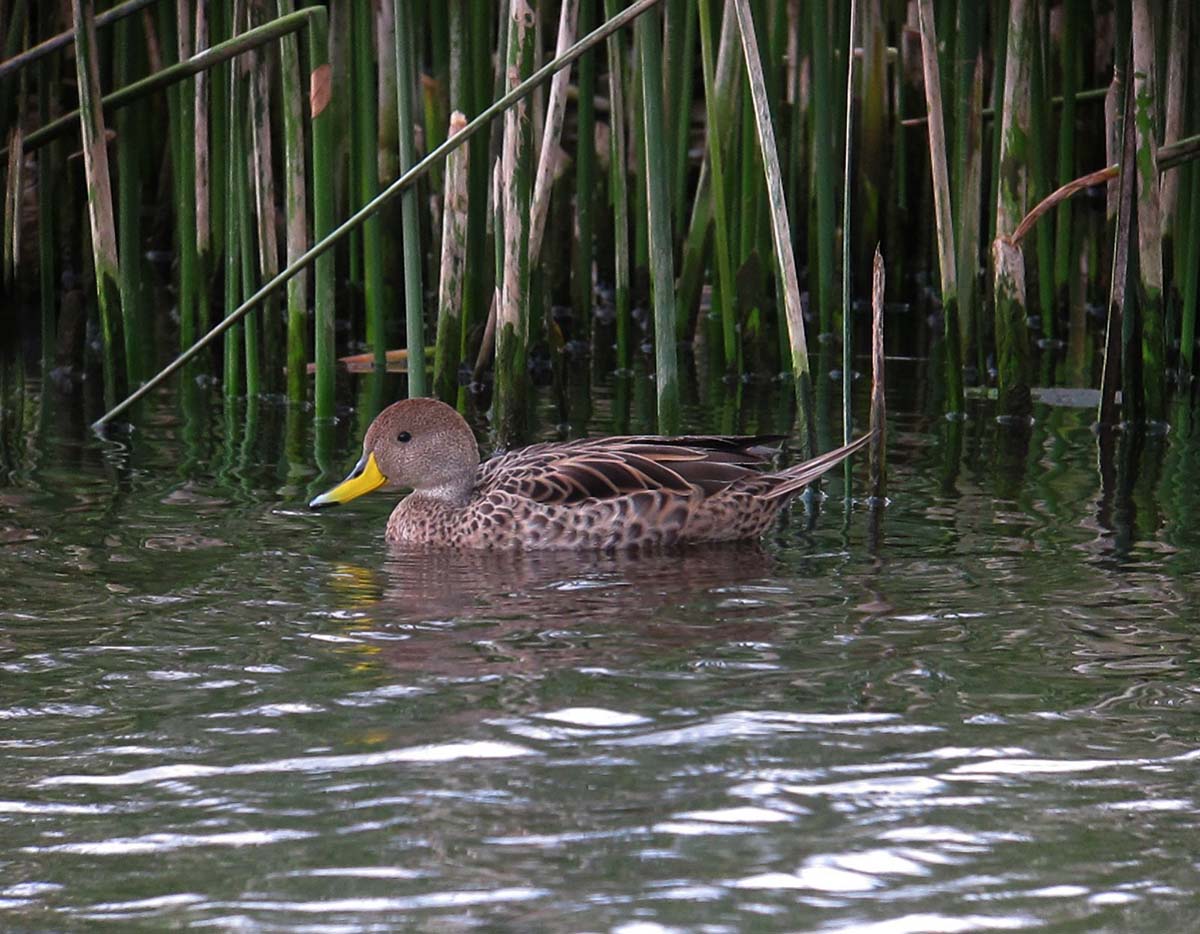
Jaén is the second-largest city in the Cajamarca region. Palm trees dot the city center while outside the urban area you will find the Peruvian high jungle. There you will find impressive bird life and picturesque waterfalls. This city is very much off the beaten path. Still, the natural protected areas outside of the city and its proximity to other parts of the northern birding circuit make it a worthy destination.
There are daily direct flights between Lima and Jaén Airport (JAE) with LATAM Airlines (1 hour 35 minutes). Several bus companies also offer transportation from Chachapoyas (3 hours 30 minutes), Chiclayo (5 hours 30 minutes), Moyobamba (6 hours 30 minutes), Piura (6 hours 30 minutes), and Cajamarca (8 hours).
Gotas de Aguas are two Private Conservation Area owned by the Troyes family. These 26-acre (10.5 ha) reserves are inhabited by more than 70 species of birds (19 endemic Peruvian birds). The reserves protect the Marañón dry forest, which is an ecoregion unique to northwestern Peru. For optimal birding, the Troyes family has constructed an observation tower and birding blinds. The little Inca Finch (Incaspiza watkinsi) is only found in these mountains and draws birders worldwide.

In 1961, Cutervo National Park became Peru’s first protected natural area. Located 2 hours 30 minutes from Jaén, Peru’s oldest national park spans 20,298 acres (8,214 ha) across the Peruvian Yungas ecoregion. Within the park are several caves. One of the park’s main objectives is to protect a colony of oilbirds (guacharos) that inhabit “la Cueva de los Guacharos”. In addition to bird species, the park protects the neotropical otter, Andean bear, mountain tapir, mountain paca, and giant anteater. Visitors are invited to explore the national park’s various ecosystems and biodiversity by way of its extensive trail system.

The Yanahuanca Forest is part of the Marañon-Chinchipe dry forest. The Huancas Cabrera family privately owns this cactus and thorn forest. With prior communication, visitors are welcome to explore the trail through the reserve. Some of the highlights include the endemic Spot-throated Hummingbird (Thaumasius taczanowskii) and Little Inca Finch (Incaspiza watkinsi).

Chachapoyas is the capital city of Peru’s Amazonas region. Although it is far off the beaten path of most international travelers, it is home to some of Peru’s most remarkable archaeological and natural wonders, namely Kuélap Fortress and Gocta Waterfall. Home to only around 32,000 people, this city exudes more of a small-town charm than city energy. Birders flock to this part of Peru due to the high endemism and variety of hummingbirds. In fact, this is the only region for birding in Peru where you can observe the iconic Marvellous Spatuletail (Loddigesia mirabilis), making it a truly unique bird-watching destination.

ATSA Airlines, a Peruvian airline, offers direct flights (1 hour 40 minutes) to and from Chachapoyas Airport (CHH) two or three days a week. As the airline uses small planes (e.g., Bombardier Q400), spaces are limited, so it is advisable to book early. Outside Chachapoyas, Jaén is the closest airport, located about 4 hours away.
The bus journey from Lima to Chachapoyas lasts 23 hours. As the Andes begin, the road becomes very curvy and is therefore not recommended for travelers who experience motion sickness. We recommend reserving the VIP seats on Movil Bus for the most comfortable experience.
At 2,531 feet (771 m), Gocta Waterfall is the world’s seventeenth-tallest waterfall with the world’s fourth-tallest free-falling drop. This impressive waterfall sits 1.5 miles (2.4 km) from the small town of Cocachimba. The waterfall is visible from the town and thus known by local people; however, it was not introduced to the outside world until 2002. Today, visitors from around the globe visit Gocta Waterfall to experience its grandeur and rich biodiversity. This area is incredibly popular for birding in Peru due to its striking hummingbirds (including the Marvellous Spatuletail!). Birdwatch at one of the lodges overlooking the falls, or along the path from Cocachimba to the waterfall base.

Constructed in the 5th century CE, Kuélap Fortress is the foremost remains of the Chachapoya civilization and is believed to be the seat of this pre-Columbian culture’s political and religious power. Stone walls reaching 66 feet (20 m) enclose this ancient city which rests on top of a mountain overlooking the Utcubamba Valley. The patches of forest and montane scrub that surround the archaeological site are prime locations for bird-watching holidays. Learn about the cultural and natural history of Peru’s seldom visited northern region on a visit to Kuélap Fortress.

The montane forests of Leymebamba and the Atuen Valley offer excellent birding. Observe endemic species like the Marvellous Spatuletail (Loddigesia mirabilis) and Spot-throated Hummingbird (Thaumasius taczanowskii). While in Leymebamba, make sure to visit Museo Leymebamba. Housing over 200 mummies from nearby Laguna de las Momias/los Cóndores that were previously at risk of looting, this museum provides insight into the Chachapoya culture past and present. The gardens alone are worth a visit and contain over 100 species of orchids.

The road from Leymebamba towards Cajamarca passes Abra Calla Calla (Barro Negro). As the road winds along the mountainside, appreciate the sweeping valley views below. There are a few birding sites along this part of the road where you can see endemic species like the Coppery Metaltail (Metallura theresiae) and Russet-mantled Softtail (Thripophaga berlepschi).
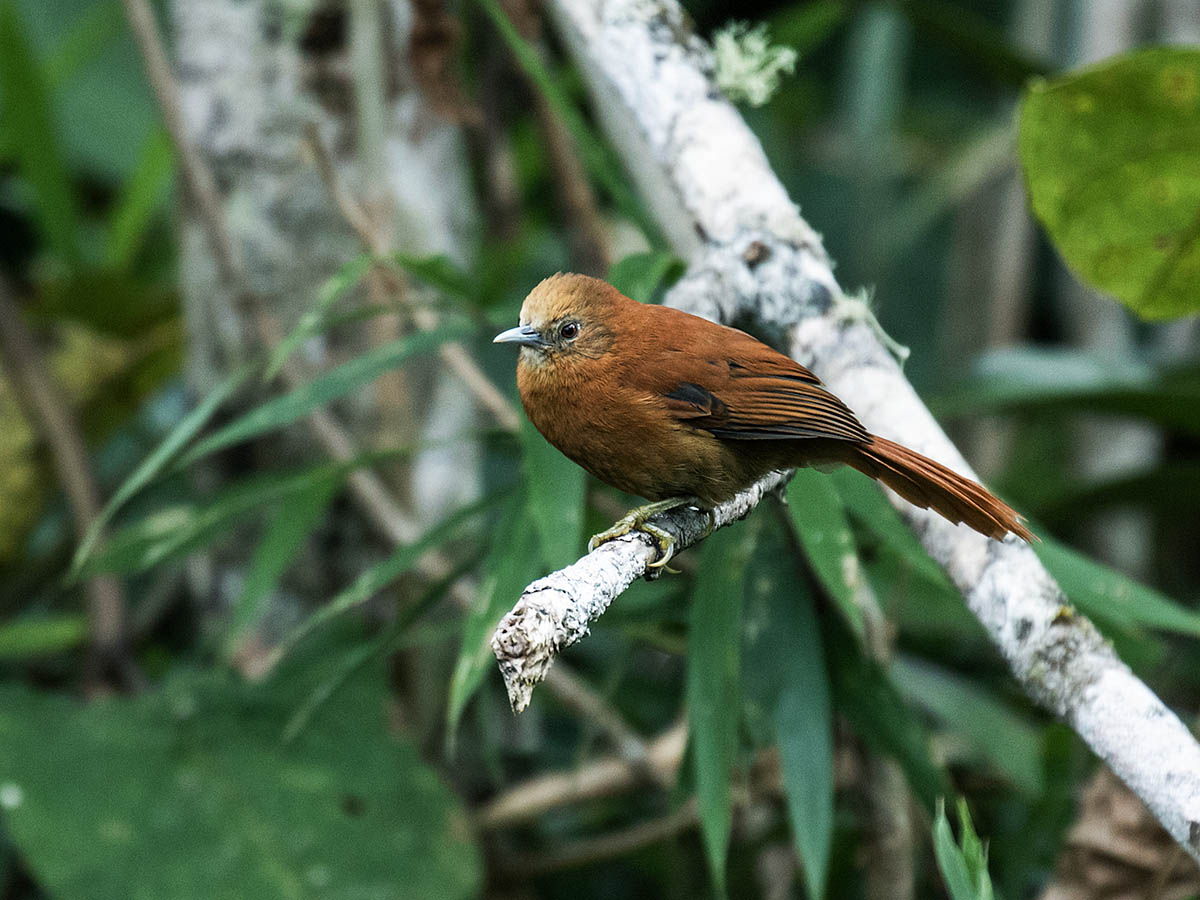
Pomacochas (or Florida) is a small town located between Chachapoyas and the Abra Patricia and Alto Mayo protected areas. Most famed for its 1,072-acre (434 ha) lagoon, it is inhabited by important aquatic species as well as the Marvellous Spatuletail (Loddigesia mirabilis), one of Peru’s most iconic birds. While there are not many hotel accommodations available within the town, Pomacochas is easily accessible from Cocachimba (Gocta Waterfall) and Chachapoyas.
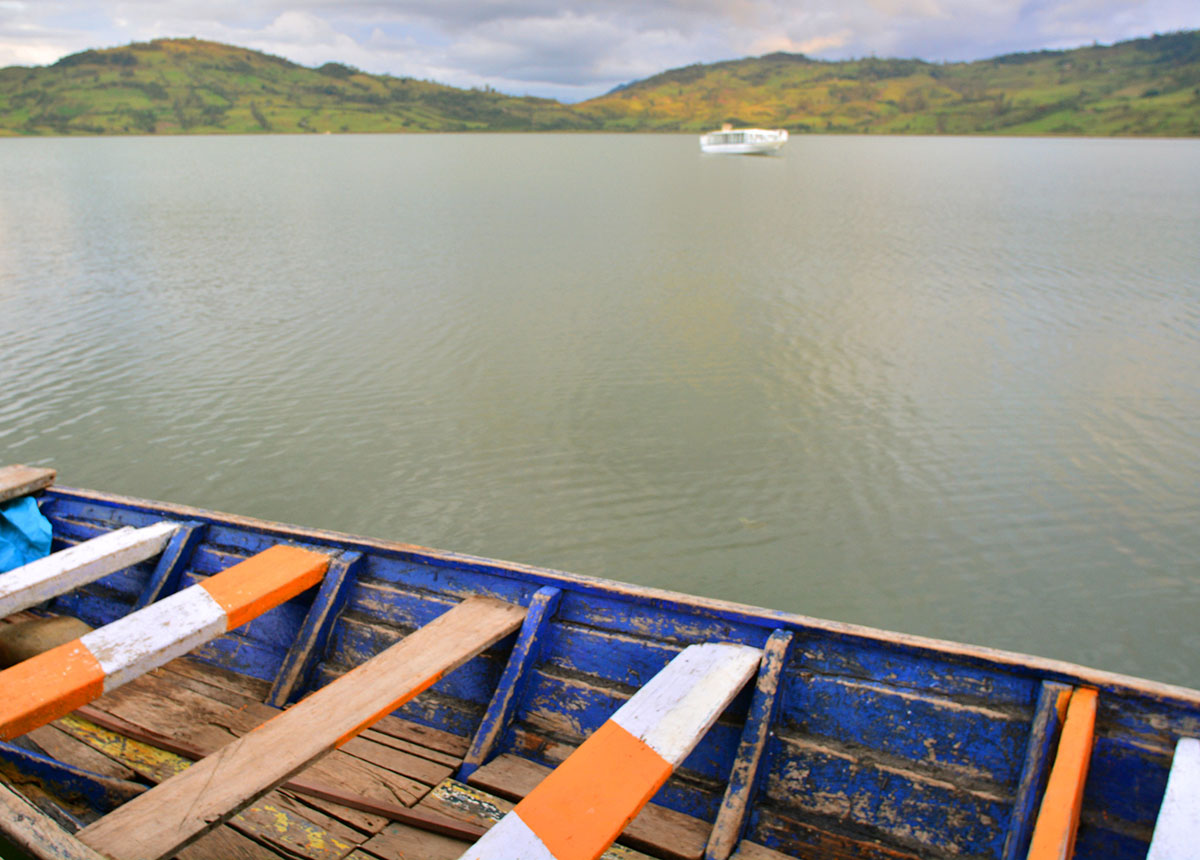
The best way to reach Pomacochas is to fly to Chachapoyas, Jaén, or Tarapoto and continue by car:
Several interesting bird species can be observed from the main road that passes through Pomacochas, such as the Marvellous Spatuletail (Loddigesia mirabilis) and Pale-billed Antpitta (Grallaria carrikeri). Located a five-minute walk downhill from the Pomacochas town center, explore the Pomacochas Lagoon’s reeds and surrounding fields while birding in Peru. Several aquatic bird species inhabit this area, including the Plumbeous Rail (Pardirallus sanguinolentus) and Puna Snipe (Gallinago andina).

Huembo Reserve is by far the best place in Peru to observe hummingbirds. Located 15 minutes from the town of Pomacochas, this reserve is owned by the local community and co-managed with the Andean Ecosystems Association (ECOAN). The reserve encompasses 91 acres (37 ha), which are primarily devoted to conserving the Marvellous Spatuletail (Loddigesia mirabilis). Visitors can explore the reserve via two walking trails totaling more than 1.2 miles (2 km). Nearby the lodge are hummingbird feeders that attract several hummingbirds species at once, certainly making for an astonishing sight!

A 15-minute drive along a dirt road from Pomacochas is the San Lorenzo annex, a small farming community. From here, visitors pay an entrance fee to the local community and continue on a path through farmland and sparse pockets of forest. Birders have the best chances of observing the Pale-billed Antpitta (Grallaria carrikeri) at San Lorenzo, a species endemic to northern Peru.

The 14 miles (23 km) of Fernando Belaunde (5N) Highway that stretches from Abra Patricia PCA through the Alto Mayo Protection Forest exhibits some of the world’s most extraordinary avian diversity. Here you will find several birding sites and many endemic species of flora and fauna. The montane cloud forests are inspiring and otherworldly.
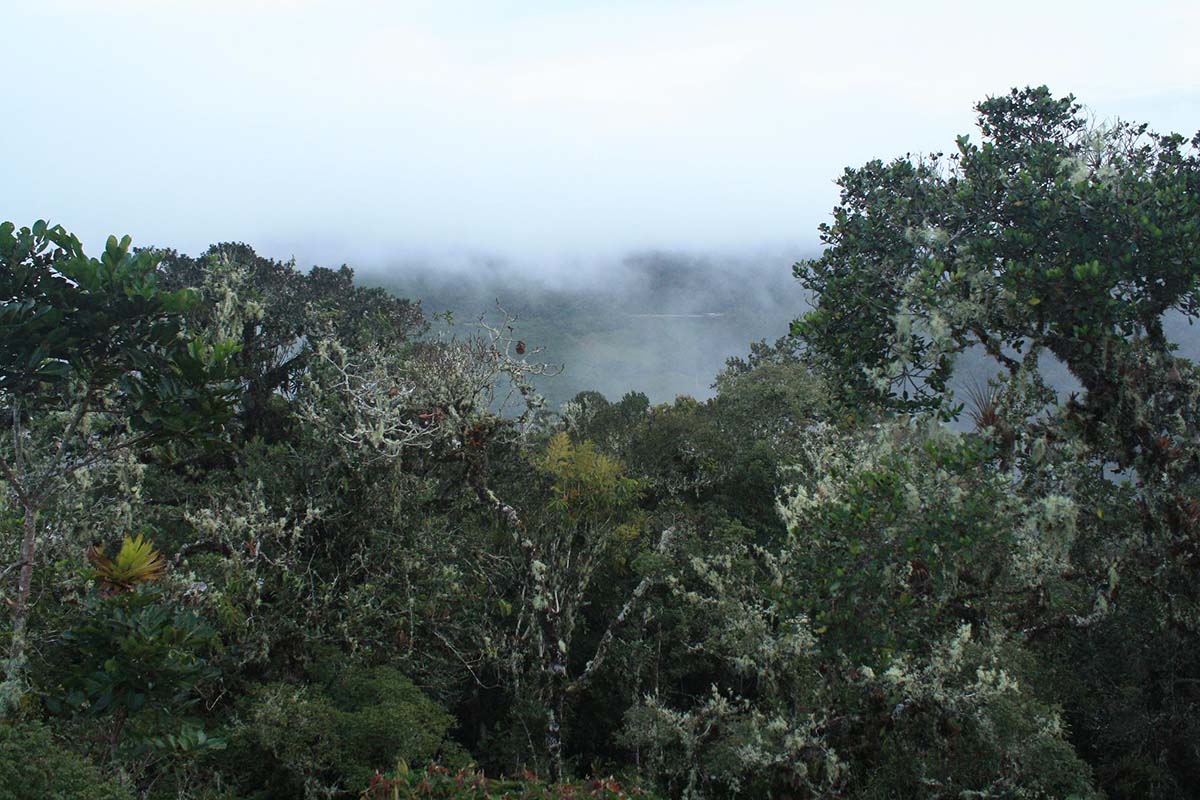
Abra Patricia PCA and Alto Mayo Protection Forest can be reached by traveling eastward from Pedro Ruiz, Chachapoyas, and Jaén or by traveling westward from Moyobamba and Tarapoto. The closest airports serviced by LATAM Airlines (the most reliable airline in Peru) are located in Tarapoto and Jaén, both between a 4–4.5-hour drive from Abra Patricia PCA’s Owlet Lodge.
Abra Patricia is a private conservation area that boasts over 300 hundred species of birds, 23 of which are threatened with extinction. Like Huembo Reserve, this 25,250 acre (10,218 ha) reserve is managed in association with the Andean Ecosystems Association (ECOAN). The value of its biodiversity is also evidenced in its designation as an Alliance for Zero Extinction site. In addition to threatened birdlife, the critically endangered Peruvian Yellow-tailed Woolly Monkey (Oreonax flavicauda) and several rare orchid species are found in the reserve. Visitors can explore trails during the day (and at night in search of the long-whiskered owlet) that extend from the reserve’s Owlet Lodge. For optimal birding, it is recommended to spend at least three days exploring Abra Patricia PCA. Talk with one of our expert Travel Advisors today to plan a stress-free birding itinerary.

Fundo Alto Nieva is a private reserve located between Abra Patricia PCA and Alto Mayo Protected Forest on Peru’s Amazonas and San Martín Regions border. Several endemic and threatened bird species are found at feeders just a 20-minute walk from the road. In fact, it is the best place to spot the endangered Royal Sunangel (Heliangelus regalis). A 10-minute drive from the Owlet Lodge, this site is an easy addition to Abra Patricia PCA.

Alto Mayo Protection Forest extends 449,732 acres (182,000 ha) in Peru’s San Martín Region. Several excellent birding sites are located along the 14 miles (23 km) of Fernando Belaunde (5N) Highway that stretches across the protected area. The Alto Mayo Protection Forest is also inhabited by several species of monkeys threatened with extinction, including the critically endangered Peruvian Yellow-tailed Woolly Monkey (Oreonax flavicauda), the endangered Andean Night Monkey (Aotus miconax), and the critically endangered Rio Mayo Titi Monkey (Plecturocebus oenanthe). The top birding sites in this area are:
The Venceremos Control Post and Interpretation Center (5,446 ft/1,660 m) is the most accessible site in the Alto Mayo Protection Forest. Enter the cloud forest with one of the park rangers on the 0.6 miles (1 km) Trocha del Quetzal. You may also spot hummingbirds at the feeders located near the orientation center—look out for the Greenish Puffleg (Haplophaedia aureliae), Royal Sunangel (Heliangelus regalis), and Tawny-bellied Hermit (Phaethornis syrmatophorus).
At Km 389+500 of Fernando Belaunde (5N) Highway is a tire shop (“llantería” in Spanish) with a large parking lot. A variety of bird species can be found at this site, appropriately named Llantería (4,823 ft/1,470 m). Marvel at birdlife on the parking lot’s edges, at the hummingbird feeders 164 feet (50 m) from the road, and on the Llantería Trail, which ventures 1,969 feet (600 m) into the forest.

Aguas Verdes is a birding hotspot as its elevation is located in a transitional zone, thus both high-elevation and low-elevation birds frequent the area. Upon exiting the eastern side of Alto Mayo Protection Forest, you will cross the Aguas Verdes Bridge. There are a couple of trails before and after the bridge that lead into the forest ideal of birding in Peru. Continuing 1.5 miles (2.5 km), you will enter the Aguas Verdes town. From the town, you can continue on foot through the white-sand forest.

Arena Blanca is a private reserve located next to the town of Aguas Verdes. The reserve is named for its forests’ white sand (“arena blanca” in Spanish) floors. You can observe up to 28 species of hummingbirds at the fruit and grain feeders at Areana Blanca reserve.

Appropriately regarded as the “City of Orchids,” 3,500 species of orchids are found in the city’s surrounding areas. Moyobamba is the capital city of Peru’s San Martín Region and has a strong agricultural presence, renowned for its coffee and chocolate. Several fascinating birding sites are located outside of the city, including Peru’s highest flooded forest (Tingana Nature Refuge).

The closest major airports serviced by LATAM Airlines are located 2 hours 5 minutes (72 mi/116 km) away in Tarapoto (TPP) and 7 hours (223 mi/359 km) in Jaén.
Morro de Calzada is a limestone hill that rises 1,804 feet (550 m) above the Mayo River Valley. From the summit, there are far-reaching views of forest, farmland, and Moyobamba. Up to eighty species of birds can be observed in this municipal reserve. One of the highlights is the Painted Manakin (Machaeropterus eckelberryi), a species recently described as new to science in 2017 and endemic to northwestern Peru. It is about a one-hour hike from the trailhead to the top, but the rich birdlife and outstanding views are well worth the effort!

While in the Mayo River Valley, also stop by the family-owned Waqanki Reserve (also referred to by birders as Quebrada Mishquiyaquillo). Observe up to 349 birds (including over 25 species of hummingbird) along trails, at feeders, and in the gardens (over 250 species of orchids are found in this reserve). There is even a three-story observation tower. Hummingbird feeders on the corners of the tower and below make for an excellent bird-watching experience.

Peru’s highest flooded forest is located just one hour from Moyobamba. At Tingana Ecological Reserve, visitors explore the flooded forest both on foot and by canoe. The best birdwatching is done from viewpoints constructed in the canopies of renaco trees. Observe a variety of birds, including up to five species of kingfisher. After your tour, enjoy traditional Amazonian cuisine at the restaurant managed by the Aguajales and Renacales del Alto Mayo Conservation Association (ADECARAM). There is also a winery and shop where you can purchase local honey, coffee, and more.
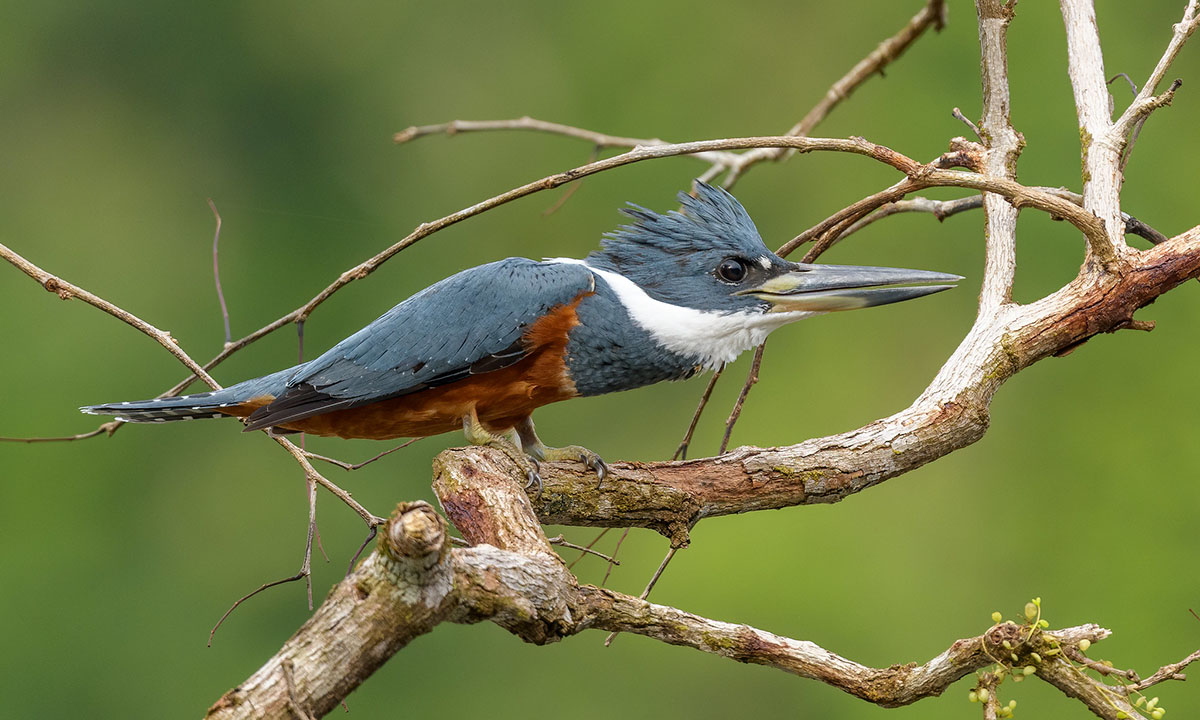
Famed for its many refreshing waterfalls and lush high jungle plateau landscapes, Tarapoto offers visitors a unique jungle experience. Nicknamed the “City of Palms,” visitors can stay at comfortable hotels in the city or the jungle less than a one-hour drive from the city center. Days are well-spent bird-watching, hiking to waterfalls, relaxing at Laguna Sauce, and learning about the native community in the village of Lamas.

The easiest way to reach Tarapoto is by air. LATAM Airlines and Star Perú operate several daily flights between Lima and Tarapoto’s Cadete FAP Guillermo del Castillo Paredes Airport (TPP) (1 hour 30 minutes). Tarapoto can be reached from other northern cities, like Moyobamba, Chachapoyas, and Jaén by bus.
Cordillera Escalera is a regional conservation area dedicated to preserving the fragile ecosystems within. The reserve encompasses 370,337 acres (149,870 ha) and is the water source for the nearby city of Tarapoto. Some of the best birding sites are located along the Fernando Belaunde (5N) Highway, which stretches 24 miles (39 km) along a mountain ridge through the reserve. Pack a swimsuit as you’ll have the opportunity to bathe in the Ahuashiyacu Waterfall after birding!
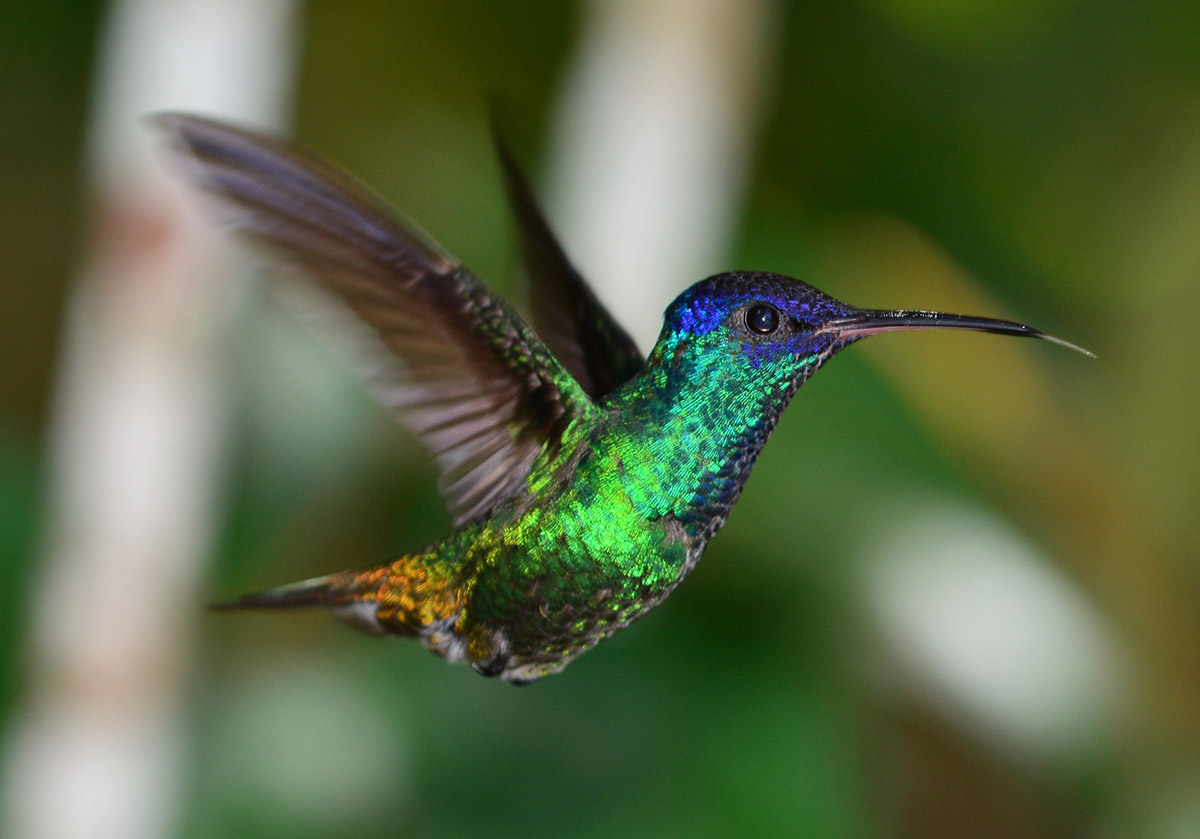
Ricuricocha Lagoon is located about 25 minutes southwest of the city of Tarapoto. More than 230 species of birds can be observed on the lake and in the surrounding fields. On a trip to Tarapoto, Ricuricocha Lagoon is an ideal site to watch aquatic birds and hopefully add a few to your life list.

Iquitos, referred to as “Peru’s gateway to the Amazon,” is famously known as the largest city in the world unreachable by road. Instead, travelers must travel via river or air. The biodiversity in this northeastern corner of Peru is astounding making it a must-see while birding in Peru. It is well worth it to devote several days of your expedition to this part of the Amazon River and Rainforest. Outside of the city are many lodges nestled along the rivers. For a more luxurious experience, there are also cruises that journey deep into the rainforest.

LATAM Airlines and Star Perú operate several daily flights between Lima and Iquitos’ Coronel FAP Francisco Secada Vignetta International Airport (IQT) (1 hour 55 minutes). While it is not possible to travel to Iquitos via road, adventurous travelers can opt for a rugged 3-day cargo ship journey where passengers slumber in hammocks.
The Tamshiyacu Tahuayo Regional Conservation Area is one of Peru’s richest areas of biodiversity. In fact, Chicago’s Field Museum of Natural History performed a rapid biological inventory in 2003, discovering that the ACRCTT has the world’s highest recorded levels of mammal and tree biodiversity compared with natural areas of its size 1,038,040 acre (420,080 ha). Over 600 species of birds are found in Tamshiyacu Tahuayo, including the endangered Wattled Curassow (Crax globulosa). Bird-watching is particularly excellent due to the reserve’s location within a migratory bird flyway. Other wildlife highlights include the vulnerable Red Bald Uakari (Cacajao calvus ucayalii), the endangered Amazon River Dolphin (Inia geoffrensis), and the endangered Giant River Otter (Pteronura brasiliensis).

Over 400 species of birds are found at the remote Tapiche Reserve, a private conservation area. This reserve was founded in 2010 to protect 3,805 acres (1,540 ha) of primary rainforest at risk of logging and the inhabiting wildlife threatened by hunting. To provide the local community with economic alternatives, a lodge and ecotourism project were created. In turn, the local people and the forest have both benefited. At Tapiche Reserve, visitors are invited to hike a network of jungle trails looking for wildlife. In addition to rich birdlife, the reserve also is inhabited by 13 species of monkeys, including the vulnerable Red Uakari (Cacajao calvus) and Spix’s White-fronted Capuchin (Cebus unicolor). The lodge is 12 hours by boat, but the pristine rainforest and variety of wildlife make the journey well worth it.

Located southwest of Iquitos, the Pacaya-Samiria National Reserve contains the largest várzea flooded forest in the western Amazon. A RAMSAR wetland of international importance, this 5,139,792 acre (2,080,000 ha) reserve is at times 95% flooded. To appreciate Pacaya-Samiria National Reserve to the fullest, we recommend exploring the reserve on an Amazon cruise. On-board expert guides will help you see as many bird species as possible as you voyage down the Amazon, Ucayali, and Marañon rivers. Although the cruise packages are high-priced, the remote areas of Pacaya-Samiria National Reserve that they reach offer some of the best birding in Iquitos, Peru.

Whether you have 5 days or 25 days to devote to traveling, we can create a meaningful and memorable birding in Peru experience for you. We are happy to assist you in customizing your itinerary until your personal specifications are met. For inspiration, below is an example of a 14-day itinerary that incorporates all three of Peru’s birding routes.
| Day 1 | Arrival in Lima & Transfer to Hotel *Overnight at Belmond Miraflores Park |
| Day 2 | Pantanos de Villa Birding Tour & Evening Culinary Tour *Overnight at Belmond Miraflores Park |
| Day 3 | Fly to Cusco & Transfer to the Sacred Valley (with Pisac Ruins Tour) *Overnight at Inkaterra Hacienda Urubamba |
| Day 4 | Abra Málaga Birding Tour *Overnight at Inkaterra Hacienda Urubamba |
| Day 5 | Train to Aguas Calientes & Machu Picchu Tour *Overnight at Inkaterra Machu Picchu Pueblo Hotel |
| Day 6 | Morning Birding near Aguas Calientes & Mandor Valley & Train to Cusco *Overnight at Palacio del Inka, a Luxury Collection Hotel |
| Day 7 | Cusco City Birding & History Tour *Overnight at Palacio del Inka, a Luxury Collection Hotel |
| Day 8 | Fly to Puerto Maldonado & Boat Transfer to Lodge *Overnight at Tambopata Research Center |
| Day 9 | Tambopata Research Center Excursions *Overnight at Tambopata Research Center |
| Day 10 | Tambopata Research Center Excursions *Overnight at Tambopata Research Center |
| Day 11 | Fly from Puerto Maldonado to Jaén (with a stop in Lima) & Transfer to Cocachimba *Overnight at Gocta Andes Lodge |
| Day 12 | Kuélap Fortress Birding & Archaeological Tour *Overnight at Gocta Andes Lodge |
| Day 13 | Gocta Waterfall Birding & Hiking Tour *Overnight at Gocta Andes Lodge |
| Day 14 | Fly from Jaén to Lima & Overnight Departure |
Peru offers incomparable bird-watching experiences. From the northern route’s high endemism to the southern route’s immense species richness, the possibilities for birding in Peru seem endless. Contact us today to begin planning your birding in Peru adventure!

Liz found herself in Peru by following her passion for wildlife conservation. In remote parts of the Peruvian montane forests, she also discovered a love for arracacha (her favorite Andean tuber) and spicy rocoto sauce.
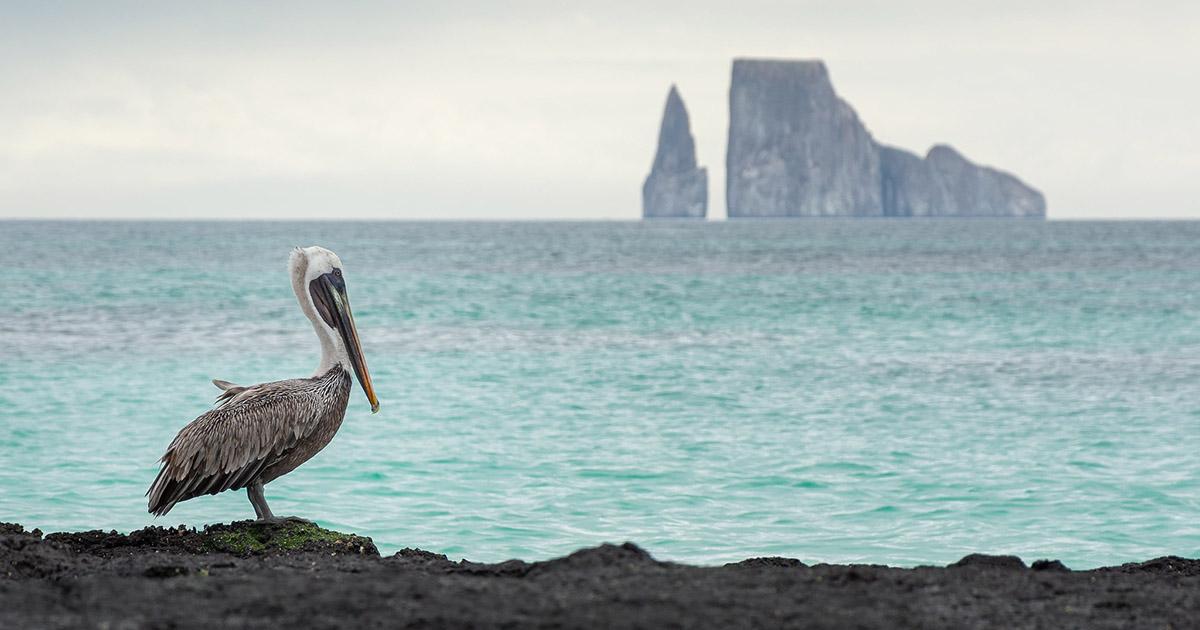
Over 500 miles from the mainland, the Galapagos Islands are at the very top of the list of must-see places in Ecuador. The diversity of species seen on the Galapagos Islands is rivaled by few places in the world. There are so many unique species of flora and fauna scattered across the archipelago that to ask which are the best Galapagos islands to visit would be unjust. Instead, we have put together our list of top things to do in the Galapagos Islands that are sure to entice all types of travelers visiting a range of islands.
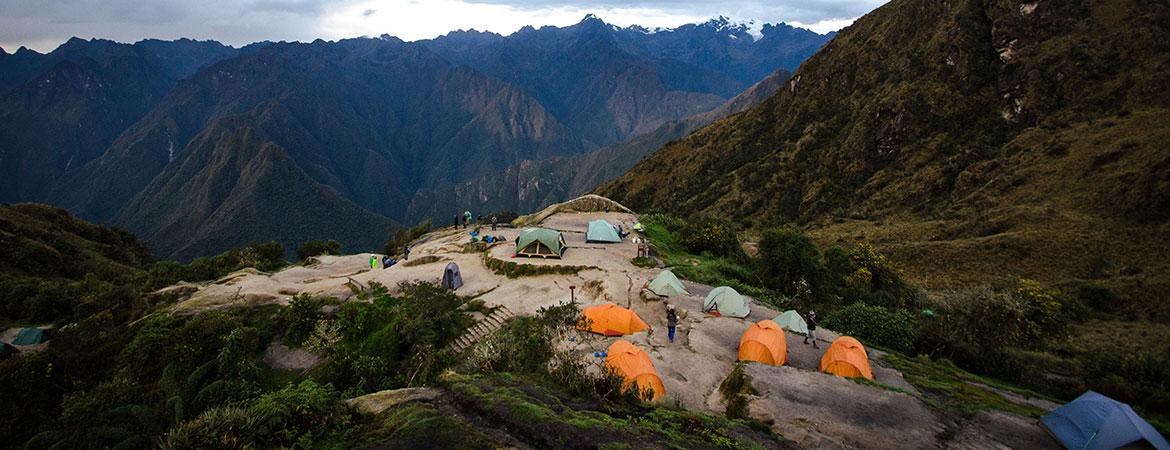
Stretching 42 km (26 mile) from the Sacred Valley to the Sun Gate of Machu Picchu, the classic Inca Trail traverses some of the most riveting landscapes in all of Peru.